

THE BRIGHT SIDE
Weareleadingthecareer pathforaglobalmobile generationofhigh-skilled professionals,executives, andentrepreneurs,lighting thewayforamorebrilliant futureforall.

HUMANCAPITAL | CAREERTRENDS




Weareleadingthecareer pathforaglobalmobile generationofhigh-skilled professionals,executives, andentrepreneurs,lighting thewayforamorebrilliant futureforall.

HUMANCAPITAL | CAREERTRENDS

EDITORINCHIEFAnaPaulaMontanha
CEOLeonardoFreitas
CHIEFOPERATINGOFFICERDaniloDias
MAGAZINEJOURNALIST&MARKETINGDIRECTORElaineDotto
BUSINESSDEVELOPMENTDIRECTORLuizFranca
Human Capital Career Trends Magazine (Online ISSN 2771-9146 | Print ISSN 2771-9138) is an American national magazine focused on career trends, immigration, and society, published six times per year on a bi-monthly basis, it is published by Hayman-Woodward Human Capital Services.
Human Capital Magazine considers its sources reliable and verifies as much data as possible, althoughreportingincarnatescanoccur;consequently,readersusingthisinformationduesoattheir risk
Human Capital Magazine is sold with the understanding that the publisher is not rendering legal services or financial advice The views expressed in the articles reflect the author's (s) opinions and do not necessarily are the views of the publisher and editor The published material, adverts, editorials, and all other content is published in good faith Human Capital Magazine cannot guarantee and accepts no liability for any loss or damage of any kind caused by this website and errorsandfortheaccuracyofclaimsmadebytheadvertisers.
All rights reserved, and nothing can be partially or in whole reprinted or reproduced without written consent All rights reserved No part of any Human Capital Magazine published work may bereproduced,storedinaretrievalsystem,ortransmittedinanyformorbyanymeans,electronic, mechanical,photocopying,recording,orotherwise,withoutwrittenpermissionfromthepublisher
Human Capital Magazine reserves the right to change any information on these articles without notice.
By reading this magazine, you agree to all terms and conditions listed above If you have any questionsaboutthispolicy,youmaycontactus
CustomerServices: customerservice@humancapitalcareertrendscom
Subscription:subcribe@humancapitalcareertrendscom
Editorial:info@humancapitalcareertrendscom
Domain:https://hwhuman.capital/career-trends/ HumanCapitalCareerTrends| 3
500MontgomeryStreet,suite210,Alexandria,22314,VA,US
LuisHenriqueGuimarãesisaMemberofBoardsofDirectorsatCosan,Moove,Compass, andVale.FormerChiefExecutiveOfficerofCosan.
RaphaelAlbergarias,Ph.D.,IPMA-A,isanEntrepreneur,CEO,BoardMember,and InternationalProjectManagementexpert,istheInterviewer.
VictoriaValdiviaCerdaisaSpacePolicyandLawExpertinChile.Sheisanexpertin Counter-SpaceandStrategicSpaceDevelopmentinLatinAmerica.
ValeriaMargaritaCardonaArcilaisanEntrepreneur,Founder,andCEOofMerakiUS.Sheis alsoanexpertintheLuxuryandFashionIndustries.
GabrielBrodellaisanEntrepreneur,GeneralManager,RDGSmart,andCivilConstruction Expert.
OrlandoDavidTheodoroistheFounderandCEOofSLATours,TioOrlandoViagens,and WebtravelLLC.HospitalityandTourismIndustryExpert.
LucasBanharaBoardmanisanEntrepreneurandInvestor.Construction,CivilEngineering, andProjectManagementExpert.
IgorSiqueiraisanEntrepreneurandexpertinConsultingandManagementforthe ConstructionIndustry.
MarioCamargoisanEntrepreneur,Lawyer,IntellectualProperty,andAudiovisualArts Professor.
LeonardoFreitasisanEntrepreneur,ChiefExecutiveOfficer,ChairmanoftheBoard,and GlobalMobilityExpert.
DaniloDiasservesasChiefRevenueOfficer,BoardAdviser,Start-UpMentor,and InfrastructureExpert.
AnaPaulaMontanhaservesasChiefHumanResourcesOfficerandmulti-organization MemberoftheBoardsofDirectors.ExpertinHumanCapitalandappointedastheEditorin-Chief.
LuizFrancaFilhoisanEntrepreneur,BusinessDeveloperDirector,whoisanExpertin Hospitality,Food,andServices.
TatianaLessaservesasVicePresidentofOperationsandisanAviationExpert.
ElaineDottoisanEntrepreneurandJournalist.
We'regenuinelygratefulforyoursupport,andweknowthatyourknowledgeandexperiencewill makeadifferenceinthelivesofourreaders
As C-level leaders, we prosper by leading an up-to-date team that actively participates in the constantly evolving boardroom landscape and makes a difference in your society. Focusingonlyonfinancialoutcomesandlongtermstrategyplansasatoppriorityinourdaily routinenolongerfitsexclusivelyourexecutive profiles We want to participate actively in a massive evolution in our thinking as a human race, building a way forward centered on human relationships. Our current edition of Human Capital Career Trends Magazine focuses on building bridges, fostering relationships, and anticipating and revolutionizing what comes next for our boards, teams, people, and those we are privilegedtoserve.
“Leadership is about productive relationships. It is doing what is right, always, when it benefits you, but especially when it does not. How you handle your career is a direct reflection of your character.”AnaPaulaMontanha.
So, let's start from the beginning To truly excel in today's world, boardroom executives need to understand leadership dynamics, embrace new organizational structures, redefineleadershippracticestofiteachglobal consumer market, prioritize diversity and societal responsibilities, become proficient in technology and innovation, foster sustainability and inclusive leadership practices, address leadership implementation challenges, and seek out opportunities to improvefinancialperformance.
It seems like a lot, and in fact, it is However, only by doing so can C-levels drive the company's success and positively affect society
The changing leadership landscape in the boardroom reflects the evolving dynamics in modernorganizations Asleadersnavigatethe complexitiesoftoday'sbusinessenvironment,
understanding the significance of these changes is crucial for driving organizational success and sustainability For example, companies like Google have embraced a more inclusive leadership approach, prioritizing team collaboration and innovation over individual achievements. This shift enhances employeeengagementandfostersacultureof creativity and adaptability within the organization
The impact of leadership changes on organizational culture and performance cannotbeunderstated.
“As humans and leaders, we are relational beings If you are a God believer, you also understand that God is a relational being The Holy Spirit and the Trinity show that God has never done anything alone. A relationship has always existed between the three; none of them has ever been alone, but none of them has ever been diminished or absorbed That is the beauty; this is a great dance of mutuality ” TheShack,WmPaulYoung,2008
We must constantly redefine growth strategies to encompass societal responsibilities and diversity initiatives We invest in constantly evolving the traditional boardroom dynamics to align with the values and expectations of various stakeholders. For instance, companies such as Patagonia have integrated sustainability practices into their core business strategies, demonstrating a commitment to environmental stewardship while driving profitability We embrace these initiatives to be better positioned to navigate challenges, foster innovation, and build resilient organizations that thrive amidst uncertaintyandchange
Transformative trends that demand attention and action have redefined our leadership landscape. Companies like Salesforce have implemented comprehensive diversity programs that go beyond hiring practices and encompasstheentireemployeeexperience
In today's fast-paced business world, diversity and inclusion have become critical componentsofsuccess.
Companies prioritizing diversity in the boardroom can benefit from various perspectives and experiences, leading to better outcomes for the organization and its stakeholders. Microsoft is a prime example of how diversifying board composition can lead to richer discussions and more robust decision-making processes By making significant strides in this area, Microsoft has demonstrated the importance of continued commitment and effort to drive meaningful andlastingresults.
The development of organizational structures and leadership models has emphasized the significance of cooperation and inclusiveness in the workplace. Organizations that permit their employees to make autonomous decisions and contribute to their success can driveinnovationandadaptabilityfaster
Effective communication is a vital foundationofsuccessfulleadership.Leaders who encourage open discussions, active listening, and transparency build trust, promote understanding, and align team members towards shared goals, drive innovation, achieve better outcomes, and enhancetheemployeeexperience.
Effectivecommunicationisaboutconveying information and creating a culture of respect, empathy, and collaboration within the organization. It also helps one be better positioned to navigate challenges, resolve conflicts, and inspire teams to achieve collectivesuccess.
Chiefs must master diverse skills, including emotional intelligence, adaptability, and a growth mindset. The evolution of leadership models reflects a broader societal shift towards more human-centric approaches to management, where empathy, vulnerability, and authenticity are essential leadership qualities.
Companies prioritizing inclusive leadership andteam-basedproblem-solvinginconsumer markets are proving better positioned to foster collaboration, creativity, and innovation within their teams, leading to more promising outcomes and increased employee engagement Embracing progressive leadership models becomes imperative for drivingsustainablegrowthandorganizational
resilience in today's dynamic business landscape

The 2022 Fortune 100 data reveals increased board diversity, with women and underrepresented racial/ethnic groups holding 46.5% of board seats. African American/Black representation notably rose, with women gaining more seats than men Women from underrepresented groups saw a higher increase in board seats than men from thesamegroups
For the Fortune 100, the largest gain in seats in percentage terms between 2020 and 2022 was Hispanic/Latino(a) board members (45 5%, five seats) However, this large percentage gain is due to a low starting number The net gain for Hispanic/Latina women is compared to a net loss of four seats by Hispanic/Latino men. Data shows significant growth in Fortune 100 companies, with more than 50 0% of board members being women and/or individuals from underrepresented racial and ethnic groups In the past decade, the number of companies in thisgrouphastripled.
Board Diversity Census on Fortune 500 Boards,July28th,2023
The world is constantly changing, and consumer markets are no exception This change has affected traditional organizational roles, such as the Chief Revenue Officer and ChiefBrandOfficer.Theseroleshavebecome specialized to cater to the changing demands andpreferencesofthemarket
Coca-Cola, for example, has taken a leadership role in redefining the part of its Chief Brand Officer to focus on sustainability initiatives and ethical branding practices. This aligns with the growing emphasis on environmental consciousness and corporate social responsibility, which helps to drive customer loyalty and create long-term value fortheirbrandsandstakeholders.
As we see the return of in-person work as a permanent fixture in consumer markets, organizations that had previously leveraged technology to drive operational efficiency and effectiveness may need to reassess their strategies. However, this trend has yet to be confirmed.
To ensure long-term success, boards are increasingly urged to prioritize talent, culture, andsustainabilityintheirstrategicgovernance efforts Having the right people in critical positions with the necessary skills and competencies to navigate complex business environments effectively By integrating these practices into their decision-making processes, boards can mitigate risks, enhance brand reputation, and create long-term value forstakeholders.
Embracing technological adeptness and innovation is essential for driving organizational success and competitiveness Agility,theabilitytoadaptquicklytochanging circumstances, is a critical trait that modern leaders must possess to navigate the dynamic business environment effectively. Apple has long embraced a culture of innovation, which has helped the company remain competitive inthemarket
Organizations prioritizing sustainability, innovation, and agility will be best positioned to navigate the ever-changing landscape of consumer markets and drive long-term success They will also prioritize creativity, experimentation,andrisk-takingto
Hiring leaders with backgrounds and experiences in different industries can bring new ideas, approaches, and strategies that stimulate creativity and innovation. These leaders are chosen to lead strategic initiatives, drive growth, and diversify revenuestreams.Thesenewboardmembers add fresh perspectives, innovative thinking, and diverse skill sets complementing the existingleadershipteam.
Despite the growing awareness of the importance of inclusivity in decision-making processes, the challenges of recruiting equipped board members persist A strategic approach beyond traditional recruitment practices is necessary to secure a board position.Itmustalignwiththeuniqueneedsof differentboardtypes.Forexample,companies like Tesla require board members with technology, sustainability, and innovation expertise to guide strategic decision-making anddrivelong-termgrowth
Continuous learning is critical to the boardroom journey since board members must stay informed about industry trends, governance best practices, and emerging challenges
Recruiting individuals with varied backgrounds and experiences for C-level positions is always a very successful approach. These boards benefit from new ideas, techniques, and strategies that drive creativityandinnovation.Mostareinvitedto lead strategic initiatives, drive growth, and diversify revenue streams. Moreover, hiring talent from other industries can bring fresh perspectives, innovative thinking, and diverse skill sets to the current leadership team.
In today's digital-first world, cybersecurity is not just an IT concern but a strategic business imperative The increasing sophistication of cyber threats necessitates a proactive and robustcybersecuritystrategyintegralto
organizational leadership and governance The emphasis on cybersecurity underscores the need for leaders to be well-versed in digital risks and preparedness strategies, ensuring the protection of critical assets and thetrustofstakeholders.
The surge in generative AI highlights a pivotal shifttowardleveragingartificialintelligenceto drive innovation and efficiency across operations However, realizing AI's full potential requires significant investment, organizational change, and a strategic approach to data management. The transformation from artisanal to industrial production of data science models reflects a broader trend toward scalability and efficiency,emphasizingtheneedforleadersto fosteracultureofinnovationandadaptability
The Chief Information Security Officers (CISOs)Agendafor2024
Critical priorities for CISOs in 2024 include increasing cyber transparency, building cyber resilience,managingcyberriskeffectively,and unlocking data value This reflects an environment of ongoing disruption and the need for agile, digitally enabled-cybersecurity capabilities For them, the focus extends beyond traditional cybersecurity measures to encompass building cyber resilience, managing risk effectively, and unlocking the valueofdata.
The Chief Marketing Officer (CMO) role is evolving in response to new technologies, changing consumer behaviors, and the need for cross-functional collaboration. The focus on leveraging AI, understanding customer needs, and driving marketing success through data-driven strategies highlights the critical role of marketing leadership in driving businessgrowth
The finance function embraces a more strategic role, focusing on data analytics, balanced growth strategies, and business processoptimization
This shift towards a more nuanced understandingoffinancialmanagementreflects thebroadertrendofCFOsplayingapivotalrole in guiding strategic decision-making and ensuringlong-termsustainability.
According to anticipated career trends, C-level executives must emphasize cybersecurity, embrace the potential of generative AI, expand the boardroom scope, and ensure that every board member's strategic priorities are met, alongwiththecurrentfinancialefficiency,focus on innovation, and adaptability requirements Thesetrendsreflectafuturewhereboardrooms are called to use their leadership to shape a betterfuture
Recognizingthatsuccessinarapidlyevolving business environment requires resilience, adaptability,andaforward-lookingapproach, we may pave the way for sustainable growth andinnovationintheyearstocome.

Ana Paula Montanha serves as Chief Human Resources Officer (CHRO) at HAYMANWOODWARD and as Managing Partner and Co-founder at HAYMAN-WOODWARD Human Capital Services. Member of the Board of International Institutions, including IPMABrazilandHAYMAN-WOODWARD Sheholds a master’s in business administration from the Stephen M Ross School of Business, University of Michigan, a graduate degree in marketing,andabachelor’sineconomics.

WORLD ECONOMIC WORLD ECONOMIC FORUM IN DAVOS: FORUM IN DAVOS: REBUILDING TRUST REBUILDING TRUST
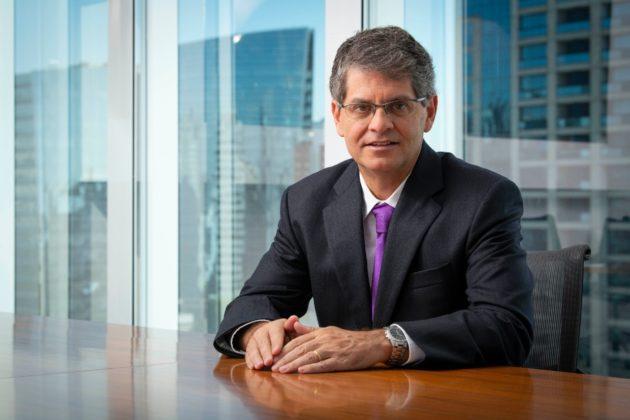
Luis Henrique Guimarães, with an illustrious career spanning over 36 years, has made significant strides in the corporate world. Initially embarking on his journey with a degree in Statistics from the National School of Statistical Sciences - IBGE, Luis furthered his academic prowess with an MBA in MarketingfromCoppead-UFRJ
His professional journey is marked by diverse roles at Shell in Brazil, the United States, and England, leading to executive positions such as CEO of Cosan, Raízen, and Comgás and serving on the Board of Directors for those companies
His leadership extends to Vale, where, since 2023, he has been an independent member of the Board of Directors, coordinating the Capital Allocation and Projects Committee and participating in the People and Compensation Committee. Luis also presides over the Brazilian Association of Public Companies - ABRASCA and is involved in social work through the National Governance CommitteeofComunitas
The World Economic Forum is the International Organization for Public-Private Cooperation. It provides a global, impartial, andnot-for-profitplatformformeaningful
The connection between stakeholders is to establish trust and build initiatives for cooperation and progress In a world marked by complex challenges, the World Economic Forum engages political, business, academic, civil society, and other leaders of society to shape global, regional, and industry agendas
The World Economic Forum has headquarters in Geneva, Switzerland, and offices in New York and San Francisco in the United States, Beijing,China,andTokyo,Japan.
Luis Henrique Guimarães recently returned from the World Economic Forum in Davos, where the focus was on "Rebuilding Trust" overfourdaysofintensivelearningand reflection.
The event underscored the exponential impact of generative AI, predicting it to surpass the revolutionary changes brought about by the internet Luis emphasizes that corporate leaders must integrate generative AI into their strategies to maintain a competitiveedge.
His insights, drawn from attending the World Economic Forum in Davos, highlight the transformative potential of generative AI and the global economic trends shaping the future.
The forum also pointed to a global trend of decreasing inflation and interest rates, signaling relief for businesses and consumers alike, with Brazil expected to experience significant economic growth The discussions highlightedthechallengesoftransitioningtoa sustainable energy future, noting the global delay in achieving the 2030 and 2050 targets However, Brazil's potential in biofuels, green hydrogen, and carbon offsetting was showcased as a unique opportunity for investmentandleadershipingreenenergy.
Luis Henrique Guimarães' insights and observations from the Davos Economic Forum, including the emphasis on the transformativepotentialofgenerativeAI,
globaleconomictrends,thespecificoutlook for Brazil and Argentina, environmental concerns,andgeopoliticalchallenges.
"The Impact of Generative AI Will Be Exponentially Greater Than the Internet" Luis HenriqueGuimarães
I have just returned from four intense days of learningandreflectionattheWorldEconomic Forum in Davos There were lectures, meetings,dinners,conversations,andwalksin atinytownthatbroughttogether2,800very diverse people to discuss the planet's recent past, present, and future. From the cold and the snow, I return energized with tremendous potential.
Themainprotagonistoftheeventwasthesocalled generative artificial intelligence, with technology companies, consultancies, and various firms intensely promoting the potential of this revolution that is already delivering concrete results. And we are just at thebeginning
The impact of generative AI will be exponentially more significant than the internet's. If you are a CEO, board member, governor, or any other leadership role, I suggest you reflect on these questions: What are you and your company/state/initiative using generative AI for daily? What capital, talent, and management attention have you allocated tothisissue?Whatwillimpactyourbusiness of these implementations, and how can you avoidlettingyourcompetitorgetahead?
Another relevant point was the convergence in the scenario of falling inflation and interest rates across all the world's economies, and global growth that is below the historical average has avoided a recession.Inthiscontext,thevigorousgrowth of India and several Middle Eastern countries deservesagreathighlight
In Brazil, everything indicates that it will be no different, and we will have a significant internal interest rate cut during the year, which will bring great relief to companies andconsumers.
This could again lead us to a surprise in the economicgrowthrate Itwasalsoverygoodto see Argentina's new and competent ministerial team present the country's transformation plans and the large set of measures that seek to reduce the size of the state and release the potential for management and investment by the private sector
President Javier Milei seems fortunate since Argentina will have a record agricultural harvestin2024.
A lot was said in Davos about nature and energy transition, but it was clear that the world is behind on the trajectory to the 2030 and 2050 goals, with a net zero even more distant.
In this context, Brazil was once again highlighted with the presence of several leaders and ministers, Alexandre Silveira (Mines and Energy) and Marina Silva (Environment), who deftly presented the great attributes of our energy matrix, transport, and biodiversity, and promoted the enormous investment opportunities in this area, with an emphasis on biofuels and green hydrogen, in addition to the capacity to compensate carbon for various countries and companies that will need it to achieve theirgoals.
Once again, it is clear that we, Brazilians, face an enormous opportunity and need to speed up licensing processes, ensure legal and regulatory stability, and attract long-term capital to explore the unique potentials in renewable energy, sustainable agriculture, mining, biomass, and carbon economy. The challenges of making an economically viable, fair, and inclusive transition were importanttoallthedebates.
On the side of challenges, the continuation of conflicts in Ukraine and Gaza, attacks in the RedSea,andamassivemigratorycrisisdonot allow us to forget that we need, as a global community, to work every day to reduce inequalities in the world, find pragmatic solutions to these conflicts, and rebuild trust amongleadersandcountries
Fragmentation and polarization are major challenges for the coming years, and we cannot discard the potential for escalation of these conflicts, which, fortunately, have notyetoccurred.
Here, again, Brazil has a privileged position for being distant from the conflicts, having a historical position of impartiality, and having the capacity to offer partner countries food security, energy security, and, more recently, carbonsecurity.
Lastly, I want to highlight the importance given to aspects of development and talent formation to face new technologies (AI), the need for decarbonization, and the new arrangements of supply chains related to geopolitical challenges. Here, we have a huge challenge in Brazil: how will we compete with the army of Indian engineers, the American innovation ecosystem, and Chinese agility in this era of generative AI? Unless we face once and for all that, it's not enough to have excellent natural resources (the best in the world), and we need a lot of talent density trainedandpreparedforthesenewindustries, we will continue to be the country of the future I am quite optimistic about the future, despite the great challenges, because, at events like these, we can visualize, touch, and experience the enormous human capacity to innovate, overcome great challenges, and continue to seek ways to generate prosperity May 2024 come, and may we, Brazilians, together know how to maximize all these opportunities.
Global leaders met at the 54th World Economic Forum Annual Meeting to rebuild trust, generate new ideas, and create partnerships to advance solutions to our challenges
In 2024, the annual meeting welcomed over 100 governments worldwide, all major international organizations, WEF’s 1,000 partner companies, civil society leaders, upand-coming leaders, the foremost experts in variousareas,socialentrepreneurs,andmedia members
Leaders included Antony Blinken, António Guterres, Emmanuel Macron, Jens Stoltenberg,UrsulavonderLeyen,andothers. Approximately 1,000 corporations hold membership in WEF, and members send a small number of key delegates to the meeting in Davos based on their membership tier Officialattendanceisbyinvitationonly.
Thisyear’sannualmeetinginDavostookplace January 15–19, 2024, and focused on rebuilding trust in an era of rapid change and increased fragmentation To effectively respond to such profound disruption, WEF’s discussions sought to restore trust at three fundamental levels: in our future, within societies,andamongnations.


SUSTAINABLE AVIATION
SUSTAINABLE AVIATION
FUEL: A PATHWAY TO FUEL: A PATHWAY TO GREENER SKIES GREENER SKIES
ExpertOpinion:TatianaLessaservesasVicePresidentofOperationsandisanAviationExpert.
As the world grapples with the urgent need to address climate change, the aviation industry faces increasing pressure to reduce its carbon footprint
In response to this challenge, Sustainable Aviation Fuel (SAF) has emerged as a promising alternative to traditional jet fuel, offering significant environmental benefits and opportunities for a more sustainable future.
SAF, derived from non-petroleum-based renewable feedstocks such as food and yard waste, woody biomass, and fats/greases/oils, represents a crucial step towards reducing emissions from air transportation Unlike conventional jet fuel, SAF offers several key advantages, including engine and infrastructure compatibility, reduced emissions,andgreaterflexibilityinproduction
One of the most compelling aspects of SAF is its compatibility with existing aircraft and infrastructure. Blended with conventional Jet A, SAF can be seamlessly integrated into current aviation systems without costly modifications This compatibility ensures a smooth transition to greener fuel options whileminimizingdisruptiontooperations
SAF has the potential to significantly reduce greenhouse gas emissions compared to conventionaljetfuel

AccordingtotheU.S.DepartmentofEnergy, 100% SAF has the potential to reduce emissions by up to 94%, depending on the feedstock and technology pathway used in its production. This substantial reduction in emissions aligns with global efforts to combat climate change and meet ambitious sustainabilitytargets.
The International Civil Aviation Organization (ICAO) reports that over 360,000 commercial flightshavealreadyutilizedSAFat46different airports, primarily in the United States and Europe. This widespread adoption underscores the growing recognition of SAF as a viable solution for reducing aviation emissionsonaglobalscale
Despite its promise, the widespread adoption of SAF faces several challenges A critical hurdle is a sufficient and reliable supply chain coupled with a strong market demand. With firm commitments from airlines and investors, the expansion of SAF production may be improved, jeopardizing efforts to meet sustainabilitygoals
However, amidst these challenges lie significant opportunities for innovation and growth TheSustainableAviationFuelGrand Challenge, initiated by the U.S. government, aims to expand domestic consumption of SAFto3billiongallonsby2030and35billion gallons by 2050 while achieving at least a 50% reduction in lifecycle greenhouse gas emissions. This ambitious initiative brings together multiple federal agencies to drive progress toward a more sustainable aviation industry.
Moreover, adopting SAF presents economic opportunities and job creation across various sectors. The growth of the SAF industry will stimulate demand for professionalswithexpertiseinconstruction, engineering, agriculture, management, and business. Governments and industry stakeholders can simultaneously advance sustainability goals and support economic growth by investing in SAF infrastructure andworkforcedevelopment.
Sustainable Aviation Fuel holds immense potential as a critical enabler of greener skies andamoresustainableaviationindustry With the right policies, investments, and collaborative efforts, SAF can pave the way toward a future where air transportation is environmentally responsible and economically viable As we strive towards a carbon-neutral future, SAF stands as a beacon of hope, offering a tangible solution to one of the most pressingchallengesofourtime
The SAF Grand Challenge and the increased production of SAF will play a criticalroleinabroadersetofactionsby the United States government and the private sector to reduce the aviation sector’s emissions in a manner consistent with the goal of net-zero emissions for the U.S. economy, and to put the aviation sector on a pathway to fulldecarbonizationby2050.


She an accomplished and successful executive professional with overall 20 years of experience in a broad range of areas,suchasimmigrationandglobalmobility, legal contract management, outsourcing management, sales, and account management She is an Aviation Industry expert

“The U.S. Department of Energy Bioenergy Technologies Office (BETO) empowers energy companies and aviation stakeholders by supporting advancesinresearch,development,and demonstration to overcome barriers for widespread deployment of low-carbon sustainableaviationfuel(SAF).
The Sustainable Aviation Fuel Grand Challenge is the result of the U.S. Department of Energy (DOE), the U.S. Department of Transportation (DOT), the U.S. Department of Agriculture (USDA), and other federal government agencies working together to develop a comprehensive strategy for scaling up new technologies to produce sustainable aviation fuels (SAF) on a commercialscale.”
Sustainable Aviation Fuel Grand Challenge:
A minimum of 50% reduction in life cycle greenhouse gas emissions comparedtoconventionalfuel.
The goal is to supply sufficient SAF to meet 100% of the aviation fuel demandby2050.
SAF made from renewable biomass and waste resources have the potential to deliver the performance of petroleumbased jet fuel but with a fraction of its carbon footprint, giving airlines solid footing for decoupling greenhouse gas (GHG)emissionsfromflight.
An estimated 1 billion dry tons of biomass can be collected sustainably each year in the United States, enough to produce 50–60 billion gallons of lowcarbon biofuels. These resources include:
Corngrain, Oilseeds, Algae, Otherfats,oils,andgreases, Agriculturalresidues, Forestryresidues, Woodmillwaste, Municipalsolidwastestreams, Wet wastes (manures, wastewater treatmentsludge),and Dedicatedenergycrops.
This vast resource contains enough feedstock to meet the U.S. aviation industry's projected fuel demand, dropin low-carbon fuels for use in other modesoftransportation,andhigh-value bioproductsandrenewablechemicals.
The aviation sector is pursuing a combination of aircraft technology, operational improvements, offsetting, and sustainable aviation fuel to reduce greenhouse gas emissions. This approach is reflected in the United States 2021 Aviation Climate Action Plan, which lays out the U S government strategy to build on sector-wide industry commitments to foster innovation and drive change across the entire U.S. aviation ecosystem and meet a goal of net-zero GHG emissions from U S aviationby2050
Keyfederalactionsinclude:
A new Sustainable Aviation Fuel Grand Challenge to inspire the dramaticincreaseintheproductionof sustainable aviation fuels to at least 3 billiongallonsperyearby2030;
New and ongoing funding opportunities to support sustainable aviation fuel projects and fuel producerstotalingupto$4.3billion;
An increase in R&D activities to demonstrate new technologies that can achieve at least a 30% improvement in aircraft fuel efficiency;
Efforts to improve air traffic and airport efficiency to reduce fuel use, eliminate lead exposure, and ensure cleanerairinandaroundairports;and
The demonstration of U.S. leadership both internationally and throughthefederalexample.
Six action areas where the federal government and stakeholders will collaborate to achieve SAF production levels.
FeedstockInnovation
ConversionTechnologyInnovation BuildingSupplyChains
PolicyandValuationAnalysis
EnablingEndUse
CommunicatingProgressandBuilding Support
Many airports have committed to sustainable operations Airports Council International- North America (ACI-NA) members have joined in the commitment to reach net zero carbon emissions by 2050,
SAF is commercially available and regularly used on passenger flights to Los Angeles, CA (LAX) and San Francisco,CA(SFO).
Several airports are pursuing the infrastructure required to enable SAF deliveriesinthefuture
Industry-leadingexamplesinclude:
Indianapolis, IN (IND), has one of the world's largest solar farms on an airport property and is a leader in electricairportshuttlebusfleets
Philadelphia, PA (PHL) has established comprehensive air quality initiatives and launched a series of energy efficiency and benchmarking initiatives that include terminal facilities and ground support equipment
Salt Lake City, UT (SLC) generates 7 percent of its energy from renewable sources,includingon-sitesolar
San Diego, CA (SAN) is the first U.S. airport to establish a regular sustainability report in order to measure progress on a range of environmentalgoals.
Dallas-FortWorth,TX(DFW)hasset a goal of achieving Net Zero Carbon by2030.
Several U.S. airports have individual road maps to achieve net zero emissions and are actively participating in the Airport Carbon Accreditationcertificationprogram

Source:https://wwwenergygov/sites/default/files/2022-09/beto-saf-gc-roadmap-report-sept-2022pdf
The SAF Grand Challenge Roadmap outlines six action areas in which the federal government and stakeholderswillcollaboratetosupportachievingtheseSAFproductionlevels
Feedstock Innovation: The Feedstock Innovation Action Area lays out R&D workstreams facilitating sustainable feedstock supply system innovations across the range of SAF-relevant feedstocks It also enables supply chain optimization to reduce cost, technology uncertainty, and risk, increase yield and sustainability and optimize SAF precursors (e g , ethanol and isobutanol) Using an evolving approach, feedstock supply systems will be developed to interface with existing or emerging conversion technologies to enable SAF production to meet near-term(2030)andlonger-term(2050)U.S.SAFproductiontargets.
Conversion Technology Innovation: The Conversion Technology Innovation Action Area covers R&D through a pilot scale from receiving biomass at the refinery gate through finished fueltoachievetechnologyimprovementsandcarbonintensityreductions.
Building Supply Chains: The SAF supply chain area encompasses feedstock production, collection, and distribution to SAF production facilities; conversion of feedstock to fuel; and transport of finished fuel to the infrastructure required to fuel aircraft Because current fuel certifications require SAF to be blended with conventional fuels, the SAF supply chain also involvescoordinationwithtraditionaljetfuelindustries.
Policy and Valuation Analysis: This action area aims to provide data, tools, and analysis to supportpolicydecisionsandmaximizethesocial,economic,andenvironmentalvalueofSAF
Enabling End Use: Focuses on RDD&D activities to facilitate the end use of SAF by civilian and military users The action area focuses on addressing critical barriers and requirements for safe andcost-effectiveuseofSAFviastandardsdevelopmentandcriticalR&Dandanalysis
CommunicatingProgressandBuildingSupport:DemonstratingSAF'senvironmental,climate, andeconomicbenefitsisvitaltobuildingpublictrustandincreasingsupport FortheSAFGrand Challenge to be successful, public awareness of SAF as one of the solutions to reduce net GHG emissions from aviation while simultaneously investing in the U S domestic economy will be critical

MAXIMIZING IMPACT IN MAXIMIZING IMPACT IN THE BOARDROOM: AN THE BOARDROOM: AN INSIDER PERSPECTIVE INSIDER PERSPECTIVE
ExpertOpinion:LeonardoFreitasisanEntrepreneur,ChiefExecutiveOfficer,ChairmanoftheBoard,and Global Mobility Expert. Ana Paula Montanha serves as Chief Human Resources Officer, Member of the BoardsofDirectors,HumanCapitalExpertandappointedastheEditor-in-Chief.
"Navigating the modern business landscape demandsboardroomsthatarecompetentin governanceandagileinstrategicforesight."
LeonardoFreitas.
The boardroom is the nerve center of corporate strategy, and its efficacy is an unmistakable indicator of an organization's potential The synergy of board members' diverse talents and experiences catalyzes strategicforesightandeffectivegovernance.
This article explores the nexus between boardroom efficacy and organizational prosperity, exploring how the amalgamation of diverse executive talents, seasoned skills, and rich experiences within the board catalyzesrobustcorporatestewardship.
In corporate governance, the strategic composition of the boardroom is not just beneficial. It's imperative for the success of any organization. Evidence from the University of Michigan's Ross School of Business suggests that boards with a blend of industry expertise and a grasp of emerging trends are more adept at navigating companiestofavorableoutcomes.
The value of a board lies in its collective wisdom, drawn from a diverse set of experiences and expertise that informs strategyandriskmanagement Forinstance,a director's financial insight is crucial for navigating market complexities, while expertise in marketing can shape a brand's competitive edge These skills are not isolated assets but part of a strategic arsenal that empowersaboardtoleadconfidently
Preparation is the linchpin of board effectiveness. Directors who engage deeply with the material analyzing reports, discerningindustrytrends,andunderstanding competitive landscapes are better positionedtocontributetostrategic
discussionsthatleadtoastutedecisions
This proactive approach to board meetings is corroborated by research from McKinsey, which reveals that effective decision-making in the boardroom is often a byproduct of rigorous preparation and a comprehensive understandingofthebusiness
Cultivating an atmosphere that values diverse perspectives is mandatory to foster a dynamic boardroom environment. This culture of appreciation and respect for varied viewpoints enhances the quality of discussions and decision-making, ensuring that strategic contributions align with the company'soverarchinggoalsandvision.
In the spirit of continuous improvement and staying up-to-date on the latest developments, directors are encouraged to pursue ongoing education and selfimprovement. Keeping pace with industry trends, regulatory changes, and technological advancements enriches the knowledge base of the board, enhancing its collective decision-makingprowess
Thiscollaborativeapproachisnotjustabout strategic planning; it's about building a culture of innovation and foresight that propels the company forward. By acknowledgingtheuniquestrengthsofeach board member and fostering a collaborative environment, Charimans develop a synergisticeffectthatamplifiestheiroverall value.
The boardroom's value is measured by its ability to turn diverse insights into strategic actions that steer the organization toward its objectives. The preparedness, the diversity of expertise, and the commitment to strategic alignment define a board's effectiveness and capacity to drive business success.
According to research, boards composed of members with pertinent industry experience and a finger on emerging trends are more adept at propelling companies toward favorable outcomes Such strategic composition was evident in Microsoft's cloud computing pivot, a move underscored by the techacumenofitsboardmembers.
Board diversity, extending beyond demographics to encapsulate a wealth of professional experiences, can significantly influence company performance. According to McKinsey & Company research, companies with diverse executive teams are 43% more likely to report higher profitability For example, integrating biotech and finance expertise in Apple's boardroom is a testament to leveraging diverse skill sets for innovative androbustfinancialstrategies.
Data from Deloitte indicates a clear business caseforincreasingdemographicandcognitive diversity in the boardroom Organizations are broadening the scope of potential board candidates to include a range of experiences and perspectives, which contributes to more robust decision-making processes This shift is reflected in the current trend where boards with multi-dimensional diversity experience more positive financial outcomes than those without such diversity. During the pandemic, boards with best-in-class diversity metrics experienced revenue growth, while those needingimprovementsawrevenuedecline
Progress in diversifying boardrooms has been steady but slow. According to a report by Deloitte, in the United States, women hold 17 6% of board seats, and minority board members hold 17 5% of Fortune 500 board seats,demonstratingtheneedforprogress
Legislation is also accelerating this shift. In California, for example, laws now mandate quotas for female board representation. Unless these women represent a family controlling the enterprise, it remains a work in progress
Warren Buffett remarked, "The right board members can help you navigate complex businessscenarios."
JeffBezosfamouslyemphasized,"Diversityof thought in the boardroom is vital for innovationandlong-termsuccess."
According to research, boards composed of memberswithpertinentindustryexperience and a finger on emerging trends are more adept at propelling companies toward favorable outcomes. Such strategic composition was evident in Microsoft's cloud computing pivot, a move underscored by the techacumenofitsboardmembers.
Warren Buffett recently shared a prevalent issue in corporate governance in his annual shareholder letter: the tendency for board directors to align too closely with management instead of providing rigorous oversight. He metaphorically suggested that CEOs often prefer agreeable board members ("cocker spaniels") rather than those who might be more challenging or questioning ("pitbulls"),acritiqueofboardcompositions that may need more robustness for effective corporategovernance.


With digital transformation at the forefront, boards infused with technological expertise are better equipped to navigate the future PwC's Annual Corporate Directors Survey highlights the growing consensus for techsavviness as imperative for company strategy, with boards like General Motors reaping the benefits of such foresight in steering investments toward electric and autonomous vehicles.
Cybersecurity: A Paramount Priority: In today's digital-first world, cybersecurity is not just an IT concern but a strategic business imperative The increasing sophistication of cyber threats necessitates a proactive and robust cybersecurity strategy integral to organizationalleadershipandgovernance.
The emphasis on cybersecurity underscores the need for leaders to be well-versed in digital risks and preparedness strategies, ensuring the protection of critical assets and thetrustofstakeholders.
The Advent of Generative AI and Data Science: The surge in generative AI highlights a pivotal shift toward leveraging artificial intelligence to drive innovation and efficiency across operations. However, realizing AI's full potential requires significant investment, organizational change, and a strategic approach to data management. The transformation from artisanal to industrial productionofdatasciencemodelsreflectsa
broader trend toward scalability and efficiency,emphasizingtheneedforleadersto fosteracultureofinnovationandadaptability
The Chief Information Security Officers (CISOs)Agendafor2024:Criticalprioritiesfor CISOs in 2024 include increasing cyber transparency, building cyber resilience, managingcyberriskeffectively,andunlocking data value This reflects an environment of ongoing disruption and the need for agile, digitally enabled cybersecurity capabilities For them, the focus extends beyond traditional cybersecurity measures to encompass building cyber resilience, managing risk effectively, and unlocking the valueofdata
CMO Priorities for the Digital Age: The Chief Marketing Officer (CMO) role is evolving in response to new technologies, changing consumer behaviors, and the need for crossfunctional collaboration The focus on leveraging AI, understanding customer needs, and driving marketing success through datadriven strategies highlights the critical role of marketing leadership in driving business growth.
The finance function embraces a more strategic role, focusing on data analytics, balanced growth strategies, and business processoptimization.
This shift towards a more nuanced understandingoffinancialmanagement

LeonardoFreitasisanentrepreneurwithover twenty-five years of experience in government relations, international trade, and business development in the United States and emerging markets, with a focus on Latin America and Asia He served as a senior business development executive for distinguished companies such as Philips Electronics, Tandberg, AT&T, and Cisco Systems, with a remarkable track record in government and private sector sales achievements His natural ability to assess deceptive behavior led him to become a certified trainer in the Facial Action Coding System (FACS), a technique developed at the University of California, San Francisco (UCSF) by renowned psychiatrist and behavioral scientist Dr Paul Ekman He furthered his studies in Behavioral Sciences at the University of Melbourne In 1996, he founded TradeSmart, the idea's genesis to help found HAYMAN-WOODWARD eventually. An accomplished musician, Mr Freitas attended the prestigious Berklee College of Music (Boston, USA), majoring in Music Production andSoundEngineering Hethencompletedan internship as a post-production studio manager at Polygram Records (now Universal Music).
reflects the broader trend of CFOs playing a pivotal role in guiding strategic decisionmaking and ensuring long-term sustainability.
PreparationandReadiness:TheBackboneof EffectiveBoards
Research demonstrates that board members’ preparation is crucial, with a reported 33% increase in proactive decision-making among well-prepared boards. Directors who delve into performance analytics and reports contribute significantly to the depth and quality of boardroom discussions, translating intostrategicadvantagesforthecompany
Executivesmustbepreparedtodiscusstopics that embrace cybersecurity and the potential ofgenerativeAI,aswellasfinancialefficiency, innovation, and sustainable adaptability requirements These trends reflect a future where boardrooms are called to use their leadershiptoshapeabetterfuture.
Championing the board's role in nurturing sustainable success, leaders like Jamie Dimon of JPMorgan Chase advocate for a delicate balance between immediate performance and visionary growth Amazon's market capitalization, surpassing $1 trillion, exemplifies the fruits of a board's commitmenttolong-termstrategicthinking


INFRASTRUCTURE AND INFRASTRUCTURE AND CIVIL CONSTRUCTION'S CIVIL CONSTRUCTION'S IMPACT ON THE U.S. IMPACT ON THE U.S. ECONOMY ECONOMY





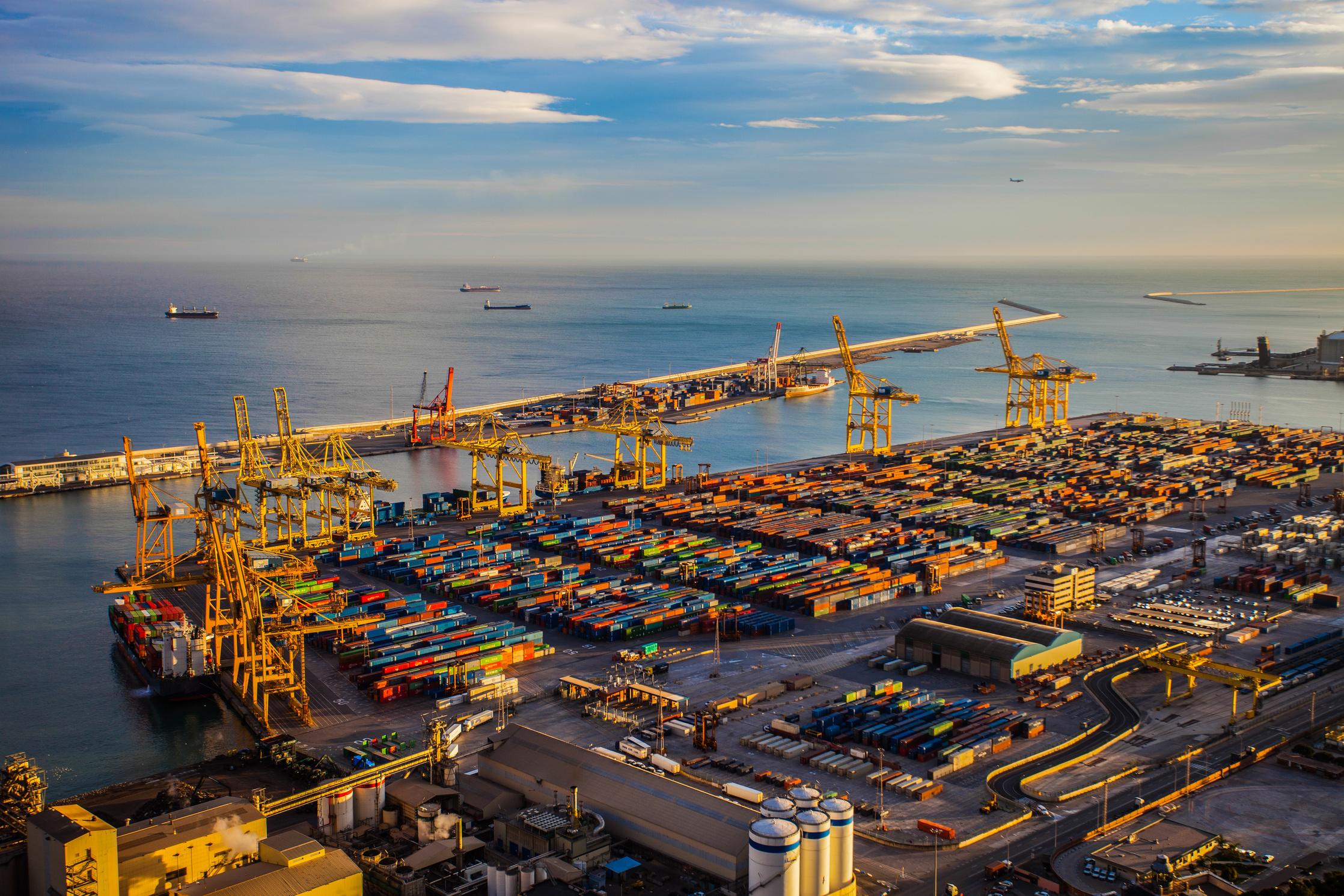


Ana Paula Montanha serves as Chief Human Resources Officer and multi-organization Member of the Boards of Directors. Expert in Human Capital and appointed as the Editor-in-Chief. Elaine Dotto is an EntrepreneurandJournalist.
The Keystone of Growth: Infrastructure and Civil Construction's Impact on the U.S. Economy
The importance of infrastructure and civil constructiontotheU.S.economy.
Infrastructure and civil construction are the bedrock of the U S economy, constituting the essential physical and organizational structures needed for the country's operation and growth. This sector encompasses many projects, from roads and bridges to water supply systems and power plants, each serving as critical arteries that fuel economic activity,connectivity,andpublicwell-being
The foundation of the U.S. economy relies heavily on infrastructure and civil construction, which are vital for the country's functioning and growth It's more than building roads and bridges; it plays a crucial role in economic strength and societal advancement.
Throughouthistory,America'sprosperityhas been closely connected to the resilience of its infrastructure. Each phase of infrastructure development, from the Erie Canal in the century to the expansion of the Interstate Highway System in the 20th century, has brought about economic growth. Today, this sector is adapting to meettheneedsofaneconomyandsocietyin transition.
Ensuringareliableinfrastructureiscrucialasit boosts economic growth and improves the overallwell-beingofallindividuals
"Construction is one of the most important industries in the U.S. economy, not just for its direct contribution but because it is integral to the success of many other industries."AnaPaulaMontanha.
The North American Industry Classification System(NAICS)
The North American Industry Classification System (NAICS) is the economic compass by which industries across North America are categorized and understood It is the backbone of economic analysis, providing a unified structure that encapsulates the breadth of market activities into coherent classifications. This systematic encoding and its economic data offer insights into industry health, growth trends, and the developmental trajectoryoftheeconomy
For infrastructure and civil construction, several NAICS codes are relevant, reflecting the diverse activities within this sector. These codes help identify the segments of the economy that are directly involved in constructing, maintaining, and repairing infrastructure projects such as highways, bridges, water and sewer systems, and other publicworks.

Key NAICS codes associated with infrastructureandcivilconstruction:
•236 Construction of Buildings. This code coverstheconstructionofbothresidentialand non-residential buildings, which are part of infrastructure projects, especially when considering facilities like schools, hospitals, andgovernmentbuildings
•237 Heavy and Civil Engineering Construction.Thissectorprimarilycoversthe construction of large roads, bridges, and tunnels The category is most directly related to infrastructure projects, including constructing transportation networks, utility systems, and large-scale public works fundamental to economic development and publicwelfare.
•238 Specialty Trade Contractors. This code includes specialized trades crucial to the completion of infrastructure projects It encompasses the precision tasks essential to the integrity and functionality of major public works. This sector comprises contractors specializinginspecificaspectsofconstruction projects, such as electrical, plumbing, and concrete work, all crucial to infrastructure development
These NAICS codes encompass activities vital to infrastructure development and maintenance,fromtheinitialground-breaking of major public works projects to the specializedtradeworkthatcompletesthem
This magazine edition will delve into the infrastructure and civil construction sector's size, significance, and prospects within the UnitedStates
We analyzed recent data from authoritative sourcessuchastheU.S.BureauofEconomic Analysis (BEA) and the U.S. Census Bureau to uncover the sector's pivotal role in employment, annual spending, and its contribution to the Gross Domestic Product (GDP).
We discussed trends with several influential leaders to illuminate the path for stakeholders to navigate future opportunities.
"Infrastructure is the backbone of the American economy, not merely supplementing but fundamentally supporting the nation's economic vigor. It's asectorwheremillionsfindtheirlivelihoods, through which the strengths of America's daily life and future growth are shaped and sustained". Danilo Dias, COO, Human CapitalCareerTrendsMagazine.
Data from the U.S. Bureau of Economic AnalysisandtheU.S.CensusBureauillustrates the enormity of this sector's role in the economy It'sarolethat'squantifiable,notjust in terms of employment rates and annual expenditures but also in its significant contributions to the Gross Domestic Product (GDP).
As we enter 2024, we see a sector in robust health, employing approximately 8.1 million people a testament to its crucial position within the nation's economic framework. This vitality is further underscored by the 374 thousand job vacancies reported at the previous year's close, signaling a sector ripe withopportunity.
Wages in this domain have kept pace with the industry's growth, averaging at $37.55 perhourwithahealthyaverageworkweekof 38.6 hours. Such figures indicate the sector's competitive nature and commitment to offering lucrative career paths.
Delving into geographic specifics, the employment landscape presents a mosaic in whichcertainstatesemergeaspowerhouses ofconstructionemployment.
The top five states California, Texas, Florida, New York, and Pennsylvania— account for nearly 38% of the sector's total U.S. employment, with California alone contributingcloseto12%.
Here are the states leading in employment figures:
2024 presents robust construction sector health, employing approximately 8.1 million people a testament to its crucial position withinthenation'seconomicframework. This vitality is further underscored by the 374 thousand job vacancies reported at the end of the previous year, signaling a sector ripe with opportunity.

The top five listed states California, Texas, Florida, New York, and Pennsylvania account for nearly 38% of the sector's total U.S. employment, with California alone contributingcloseto12%.Incomparison,the toptenstatesrepresent52.7%.
A parallel examination of wage trends reveals that construction workers in certain states enjoy higher earnings, both hourly andannually.
This is particularly noticeable in states like Hawaii, Massachusetts, and New York, where the construction sector's remuneration is amongthemostcompetitive
Thetopstatesbymeanhourlywageare:
Andbymedianannualwage:

The sector's employment dynamics, characterized by job gains and losses, reflect its responsive nature and alignment with broader economic conditions. This responsiveness is mirrored in the variation of employment and wage levels across states, echoing regional economic climates and the cost-of-livingindicesthatshapethem
The states with the highest employment figures notably California, Texas, and Florida are beacons of economic activity, frequently pioneering substantial residential, commercial, and infrastructure projects that drive employment Conversely, the wage disparities observed point to the complexities of regional economies, where factors like cost of living, labor protections, and the demand for skilled labor converge to shape the constructionindustry'swagestructures
Employment within this sector is vast and diverse, covering civil engineers, construction workers, project managers, andurbanplanners.The U S Bureau of Labor Statistics highlights that construction and extraction occupations are progressing upward, emphasizing the sector's resilience and growing need to refurbish the nation's infrastructure.
The Annual Survey of Construction from the U S Census Bureau reports billions of dollars invested in construction projects annually, demonstrating the sector's vital role in stimulatingeconomicgrowth.

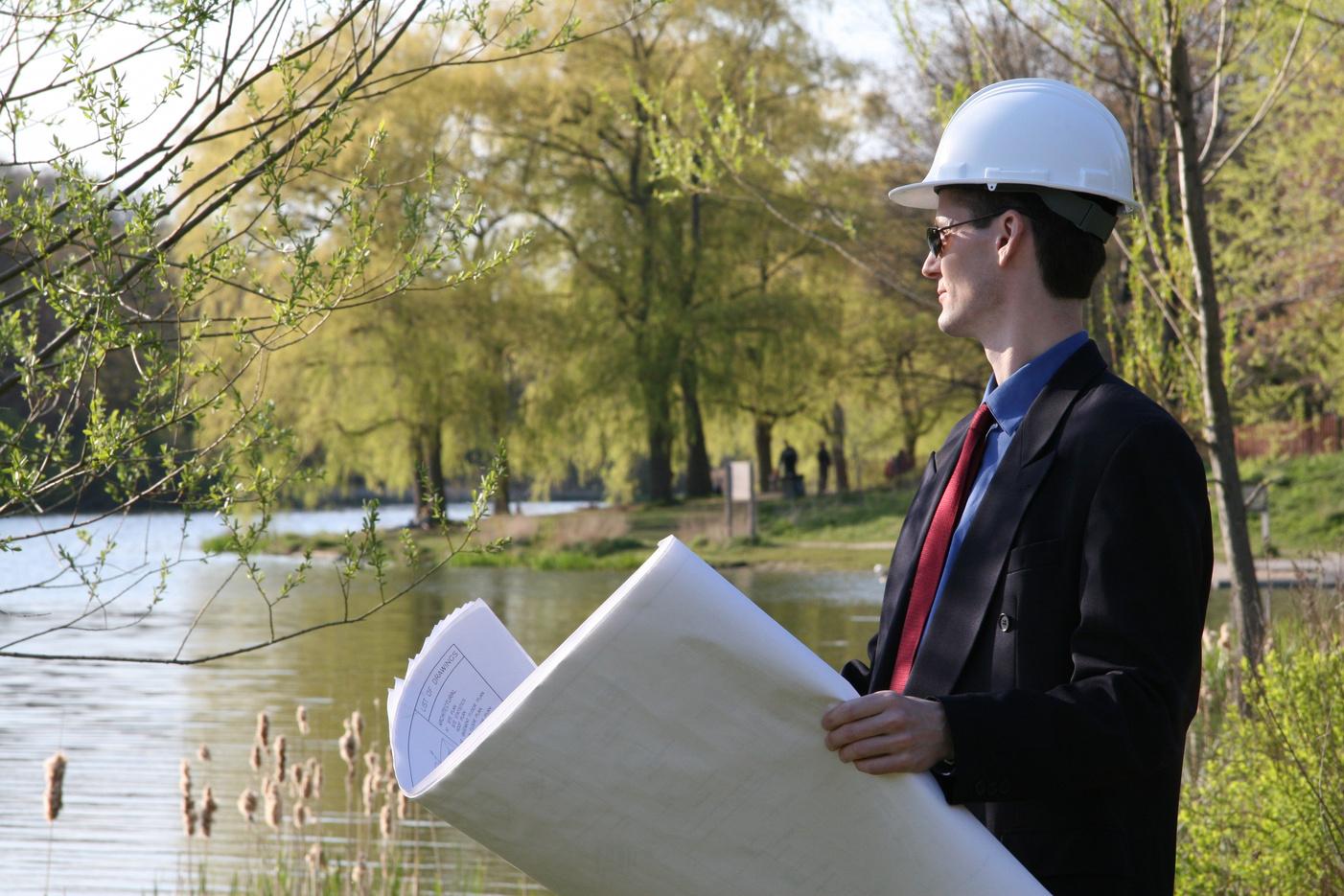
Investments are distributed across various sub-sectors, such as transportation, utilities, and energy, each essential for the nation's economic health and resilience. Theseinvestmentsreflectthegovernment's commitment to maintaining and enhancing infrastructure and underscore the potential forfuturegrowthandcompetitiveness.
Significant investment goes into a variety of sub-sectors, including transportation (roads, bridges, and airports), utilities (water and sewage systems), and energy (power plants and transmission lines), each vital for the nation's economic health and resilience The allocation of these funds reflects the government's commitment to maintaining and enhancing infrastructure to support futuregrowthandcompetitiveness


In energy, the Dakota Access Pipeline has been a significant undertaking designed to transport domestically produced crude oil from the Bakken and Three Forks production areas in North Dakota to major refining markets Despitethecontroversy,ithighlights the sector's complexity and the balance between economic development and environmentalstewardship.
The current landscape of the infrastructure and civil construction sector in the United States is marked by its vast scope, significant economic contributions, and pivotal role in shaping the future of the nation's financial health and societal well-being. As these projects and many others unfold, they represent substantial investments in the country's physical fabric of the country but also its economic future and the quality of life forallAmericans.
The construction sector is crucial for economic development through direct job creation and its multiplier effect across otherindustries.

The sector is expected to maintain its growthtrajectory,withasubstantialnumber of job openings projected annually over the nextdecade.
The construction sector plays a pivotal role in job creation across the U S , significantly contributing to the national economy Employment in construction and extraction occupations is expected to grow at a pace comparable to the average for all occupationsfrom2022to2032.Thisgrowth is anticipated to generate about 646,100 newjobopeningseachyear.
The construction sector not only directly creates many jobs but also significantly multiplies the economy. Infrastructure investment in construction increases demand in related sectors, such as manufacturing materials and services like engineering and architecture. This, in turn, boosts overall economic growth by improvingproductivityandefficiencyacross variousindustries.
Construction wage levels are competitive, reflecting this sector's importance and demandforskilledlabor.
Thereachandimpactoftheinfrastructureand civil construction sector are immense and multifaceted, engaging a spectrum of professionals from civil engineers and project managers to skilled tradespeople and urban planners. The sector's diversity is its strength, providing resilience and adaptability as it meets the growing demands to refurbish America'sstructuralbackbone
The U.S. Bureau of Labor Statistics projects a robust trajectory for construction and extractionoccupations,anticipatingasurge in employment as the nation rallies to modernize its foundational infrastructure. This upswing reflects a sector invigorated by innovation and driven by the need to futureproofourcitiesandtowns
Billions are funneled into the sector annually, with the Annual Survey of Construction from the U S Census Bureau charting the flow of investments that catalyze economic growth. These funds disseminate through crucial subsectors transportation,utilities,andenergy each a pillar supporting the nation's economic vitality and fortitude against the challenges of tomorrow
Government investment channels resources into critical areas, indicating the commitment to infrastructure integrity Roads, bridges, and airports receive much-needed attention, bolstering connectivity and commerce Water and sewage systems, often unseen yet vital, receive upgrades, ensuring public health and environmental protection. The energy sector, too, sees an influx of capital, with investments in power plants and transmission lines affirming the push towards a resilient and sustainableenergyfuture
Let us examine the transformative potential ofcriticalprojectswithinthesesub-sectors:
•Transportation: New York City's Second Avenue Subway expansion is a paragon of urban transportation development Its completion not only enhances commuter accessibility but also promises to ignite economic revitalization in adjacent communities
•High-Speed Rail: The ambitious California High-Speed Rail project, a first for the nation, aimstorevolutionizeintercitytravel,boostjob creation, and advance environmental conservation by connecting the state's major urbancenters
•Energy: The Dakota Access Pipeline represents the intricate interplay of energy needs and environmental considerations, navigating the complex terrain of economic imperativesandstewardship
These projects are examples of the vast investments reshaping the nation's infrastructure landscape. They embody a broader commitment to repair, maintain, reimagine, and reinvent the environments in whichweliveandwork
Technological advancements, pivotal government policies, and an unwavering commitment to sustainability and resilience reshape infrastructure and civil construction trajectories
Recent reports indicate a 30% increase in AI and IoT deployment across major smart infrastructure projects (Source: Smart Infrastructure Market Analysis) With the global green construction materials market projectedtogrowataCAGRof7.5%overthe next decade (Source: Green Construction Market Report), the push for sustainability is clear. Furthermore, automation in constructionhasseenanuptick,with25%of construction processes now leveraging robotics, a figure expected to double by 2030 (Source: Construction Automation Trends).
The latest federal infrastructure bill earmarks over $1 trillion for sector enhancements, a historic investment estimated to create over 2 million jobs annually over the next decade (Source: Congressional Budget Office) Approximately 10% of the national budget is now directed towards infrastructure, signaling a strategic focus on this critical sector (Source: Federal InfrastructureFundingReport).
Inlinewithnewbuildingcodes,therehasbeen a 20% surge in sustainable construction projects (Source: National Green Building Adoption Index). These practices have contributed to a significant 15% reduction in carbon emissions in the sector (Source: SustainableBuildingEmissionsReport)
Investments in resilience are paying dividends, with cost savings from averted disasterdamageestimatedat$6forevery$1 spent(Source:GlobalResilienceIndex).
Financing large-scale infrastructure projects isacomplexchallengethatcallsforinnovative solutions. Public-private partnerships (PPPs) have emerged as a viable model, blendingpublicoversightwithprivatesector efficiency and capital. The Federal Highway Administration (FHWA) reports that PPPs can lead to expedited project completion times and shared risk management. However, establishing the proper framework for these partnerships is crucial to safeguard public interestsandequitablefinancialbenefits
The role of federal funding is also fundamental. While it provides the necessary seedmoneyforcriticalprojects,theremustbe a discernible gap between the available funding and the investment needed to overhaul the nation's infrastructure comprehensively Bridging this gap has required increasing federal allocation and innovative financing mechanisms such as infrastructurebanksandbondmarkets.
The construction sector is experiencing a significant skills gap, with the Department of Labor (DOL) noting that skilled professionals are needed in specialized areas such as green construction, automation,andintelligentinfrastructure.
DOL initiatives aim to address these gaps through vocational training and apprenticeships, offering pathways for workers to gain high-demand skills. There is an opportunity to expand these programs to traditionally underserved communities, fostering diversity and inclusivity in the workforce
The construction industry is grappling with a significantskillsgap, especially in specialized areas such as green construction, automation, and intelligent infrastructure. Withaconsiderableportionoftheworkforce nearing retirement and needing more young people entering the trades, the industry facesashortageofqualifiedlabor.
According to the Associated Builders and Contractors (ABC), there were 374,000 constructionindustryjobopeningsinJune.

2023, which is a historical high for unfilled positions. Additionally, the median age of construction workers is around 41, with about45%oftheworkforcebeing45yearsor older,indicatinganagingworkforce.
To address these challenges, construction firms must invest in comprehensive training programs offering continuous skill development Studies have shown that for every 1% of the project labor budget invested in training, productivity can increase by 11%. Apprenticeships are also a valuable tool for training and can provide a broad knowledge base before individuals choose a specific careerpathwithintheindustry
The report "Building America's Infrastructure Workforce" by the National Skills Coalition outlines the urgent need for a skilled workforce to meet the demands of planned infrastructure investments It emphasizes the potential of creating millions of jobs and the necessity for education and training beyond high school to fill these roles. It also highlights challenges such as an aging workforce and the underrepresentation of women and people of color in infrastructurerelated jobs The report advocates for investment in workforce policies, sector partnerships, and strategies to connect job seekers with necessary skills, stressing the importance of inclusivity in these opportunities
Based on the data extracted from the "Building America's Infrastructure Workforce" report, we can see that the construction and broader infrastructure sector is facing a significantchallengeintermsofworkforce
development:
Workforce Demand: Due to growth, retirements, and turnover, the industry is expected to need up to 4.6 million new workers, 1.2 times the current workforce, over ten years. This is exacerbated by projected annual job openings being 68 percent larger than the number of students completingrelatededucationalprograms.
Demographic Issues: The transportation workforceisaging,withnearly50percentof the current workforce expected to retire within the next ten years, double the retirement rate of the nation's entire workforce. Additionally, there is a historical underrepresentation of women and ethnic minorities in the construction and transportationmanufacturingsectors
EducationandTrainingNeeds:Nearlyhalfof the new jobs created by infrastructure investment will require education and training beyond high school, necessitating a significant expansion of community college programs, apprenticeships, and other trainingopportunities.
Job Creation Potential: A federal infrastructure investment is projected to create more than 11 million direct and indirect jobs across education levels However,thereisaconcernthatlaborandskill shortages could impede the progress of infrastructure programs, highlighting a need for a large pool of skilled workers ready for newjobs.
High-skilled Immigrant Entrepreneurs are also diversifying the workforce, which is a crucial strategy to fill the skills gap. The current construction workforce is predominantly composed of older white men, with women making up only about 11% and 87% of the workforce being white Reaching out to underrepresented groups, including women, ethnic minorities, and young people, canhelpbringinnewtalentandperspectives.
In terms of technology, leveraging project management skills and construction project management software can also help mitigatetheimpactoflaborshortages.
These digital tools can automate administrative tasks, allocate labor more effectively, and streamline project communication, potentially increasing productivityby10to25%weekly.
To cultivate a skilled workforce, construction companies are developing a culture of continuous learning and providing meaningful benefits beyond compensation, including family leave, retirement, mental health support,andwellnessbenefits.

Delving into the financing models, it's evident that PPPs and federal funding are part of a broader financial ecosystem that includes state and municipal bonds, user fees, and tax incentives. The balance of this mix is critical for sustainable project funding Each model presents opportunities and challenges, from the accountability and transparency required in PPPs to the political will necessary forincreasinguserfees
The DOL statistics indicate that while the construction sector has rebounded from economicdownturns,thelabormarkethasyet tokeeppacewithtechnological
The forecast suggests a continuing need for skilled laborers, adept in new technologies and sustainable practices. This dynamic presents a significant opportunity for internationally trained and high-skilled professionals, entrepreneurs, and STEM professionals to target education and training programs, which can be developed with industry stakeholders to ensure alignmentwithfuturejobrequirements.
The infrastructure and construction sector will grow substantially within the next five years in several key areas. Smart city initiativesarepredictedtogrowexponentially, with investments in IoT devices and smart infrastructure expected to double, streamlining everything from traffic management to energy conservation. Policy changes may include increased funding for green infrastructure projects driven by governmentalcommitmentstoenvironmental sustainability
Regarding job creation, we can anticipate hundreds of thousands of new jobs, specifically in areas requiring more advanced technical skills related to sustainability and technology integration. Investment in infrastructure is also projected to rise significantly, with the federal government and private sector expected to increase spending by upwards of 20 percent, focusing on modernizing aging systems and incorporatingresilientdesigns
A decade ahead, the construction industry is poised to undergo a transformative shift influenced by urbanization, demographic changes, and technological advancements. Urbanization is expected to increase demand for infrastructure development in metropolitan areas, potentially tripling spendingonpublictransportationandutilities.
Demographic shifts, including an aging population and a more diverse workforce, willlikelyleadtopolicychanges
emphasizing accessibility and inclusive urbanplanning. Technological advancements will continue to revolutionize construction practices, with automation and AI becoming standard across the industry, leading to a potential increase in productivity by over 30 percent.
Quantitative forecasts suggest that the sector's job creation rates could increase by at least 10 percent annually, influenced by ongoing trends and investments As part of public and private investment strategies, spending on infrastructure could reach new heights, potentially exceeding $1 trillion overthenextdecade.Sectorgrowthratesare expected to outpace the average industrial growth,withparticularemphasisonrenewable energy infrastructure, which might see a compound annual growth rate (CAGR) of 8 percentormore.
Emerging trends, such as the development of smart cities and the integration of renewable energy infrastructure, will be at the forefront of urban planning The growing emphasis on reducing carbon footprints will lead to innovation in construction materials and methods, including using recycled materials andzero-energybuildingdesigns
The demographic shifts will also play a critical role, with a more diverse population demanding more equitable infrastructure solutions. This could lead to a surge in community-driven projects and a significant increaseinworkforcediversityinitiatives
The following 5 to 10 years present an exciting era for the construction and infrastructure sector. With the convergence of policy support, investment, and technological innovation, the industry is on the cusp of a new chapter that promises growth,efficiency,andinclusivity.

CONTROL STATION, WE CONTROL STATION, WE HAVE A CONSTRUCTION HAVE A CONSTRUCTION PROBLEM. PROBLEM.
Expert Opinion: Victoria Valdivia Cerda is a Space Policy and Law Expert in Chile. She is an expert in Counter-SpaceandStrategicSpaceDevelopmentinLatinAmerica.
Throughout the history of human civilization, the construction of facilities, shelters, and various structures has been essential for societaldevelopment.Providingshelterisnot merely a practical necessity but also a key factor in establishing a sense of security amongcommunities.Therefore,theplanning and construction of living spaces are crucial aspects of societal organization, deeply intertwinedwithhumanwelfareandprogress.
With each wave of innovation and the emergence of new techniques, significant advancements have been made in materials and spatial concepts These developments enhance societies' resilience and shape how communities interact with their environment, including the utilization of shared and public spaces As a result, our built environment reflects social dynamics, beliefs, and concerns
Over the past six decades, exploring outer space has provided humanity unprecedented access to information. The rapid proliferation of space-based data, facilitated by widespread internet access, has proven invaluable in enhancing security in construction activities. Particularly, it has improved awareness in urban planning and land use, enabling the identification of secure locations for new developments and mitigating the risk of major disasters such as floods,volcaniceruptions,orearthquakes
Harnessing space-based information, the planning process for new neighborhoods now includes human assessments of secure locations, reducing the likelihood of catastrophic events affecting densely populated areas Technological platforms, such as Geographic Information System (GIS) viewers, provide user-friendly interfaces for assessing risks associated with specific land areas. This allows for adapting materials and building techniques to improve buildings' resilienceandtheirinhabitants'safety
However, despite the availability of such information, there remains a significant gap inawareness,leadingtoanincreaseinmajor disasters. It is essential to recognize that natural phenomena, such as volcanic eruptions or floods, only become disasters when they impact human society by disrupting daily life and undermining the senseofnormalcyandsecurity.
Natural disasters pose significant challenges for the construction sector, exacerbating economic burdens on countries When disasters such as hurricanes, earthquakes, floods, or wildfires strike, they often result in widespread destruction of infrastructure, buildings, and homes. This destruction leads to immediate economic losses and long-term financialstrainsonaffectedregions
In the aftermath of a natural disaster, the construction sector faces immense pressure to quickly rebuild damaged or destroyed structures. However, the process of reconstruction is complex and costly. Materials may need to be imported, skilled labor may be in short supply, and regulatory hurdles may slow progress As a result, construction costs soar, putting additional strain on government budgets and private resources.
The impact of natural disasters on the construction sector reverberates throughout the economy Disrupted supply chains and decreased productivity in the construction industry can lead to job losses and reduced workerincome.Smallbusinesses,suchaslocal contractors and suppliers, are particularly vulnerable to the economic downturn caused bydisasters,astheymaylacktheresourcesto recoverandrebuild
Moreover, destroying homes and infrastructure disrupts daily life for affected communities, further hampering economic activity
Businesses may struggle to operate without functioning roads, utilities, or telecommunicationsinfrastructure Tourism,a significant source of revenue for many regions, may decline in the wake of a disaster, furtherexacerbatingeconomiclosses.
The financial toll of natural disasters extends beyond immediate recovery efforts Governments often bear the brunt of the financial burden, as they are responsible for funding disaster relief and reconstruction efforts This diverts funds from other critical areas such as healthcare, education, and infrastructure development Additionally, governments may need to borrow money or raise taxes to cover disaster recovery costs, furtherstrainingnationaleconomies.
The economic impact of natural disasters is particularly severe in developing countries, where resources are already scarce and infrastructure is often inadequate Disasters can offset development gains, pushing countries further into poverty and hindering progress towards sustainable development goals
Therefore, natural disasters profoundly impact the construction sector and the broader economy. The costs of rebuilding after a disaster are substantial, placing strain on government budgets, businesses, and individuals. Addressing the economic consequences of natural disasters requires coordinated local, national, and international efforts to mitigate risks, improve resilience, andpromotesustainabledevelopment.
This issue is critical for economic stability at bothnationalandgloballevels Majordisasters necessitate costly recovery processes, typically borne by the state, diverting fiscal resources from other vital areas such as education and healthcare. Studies have shown a direct correlation between global warming, a critical climate change phenomenon, and state expenditure on naturaldisasterrelief.
In this context, a better understanding of land dynamics and focusing on building resilience are paramount. The construction sectormustutilizeallavailabletools,including space-based data, to offer comprehensive solutionsthatprovidelargepopulations

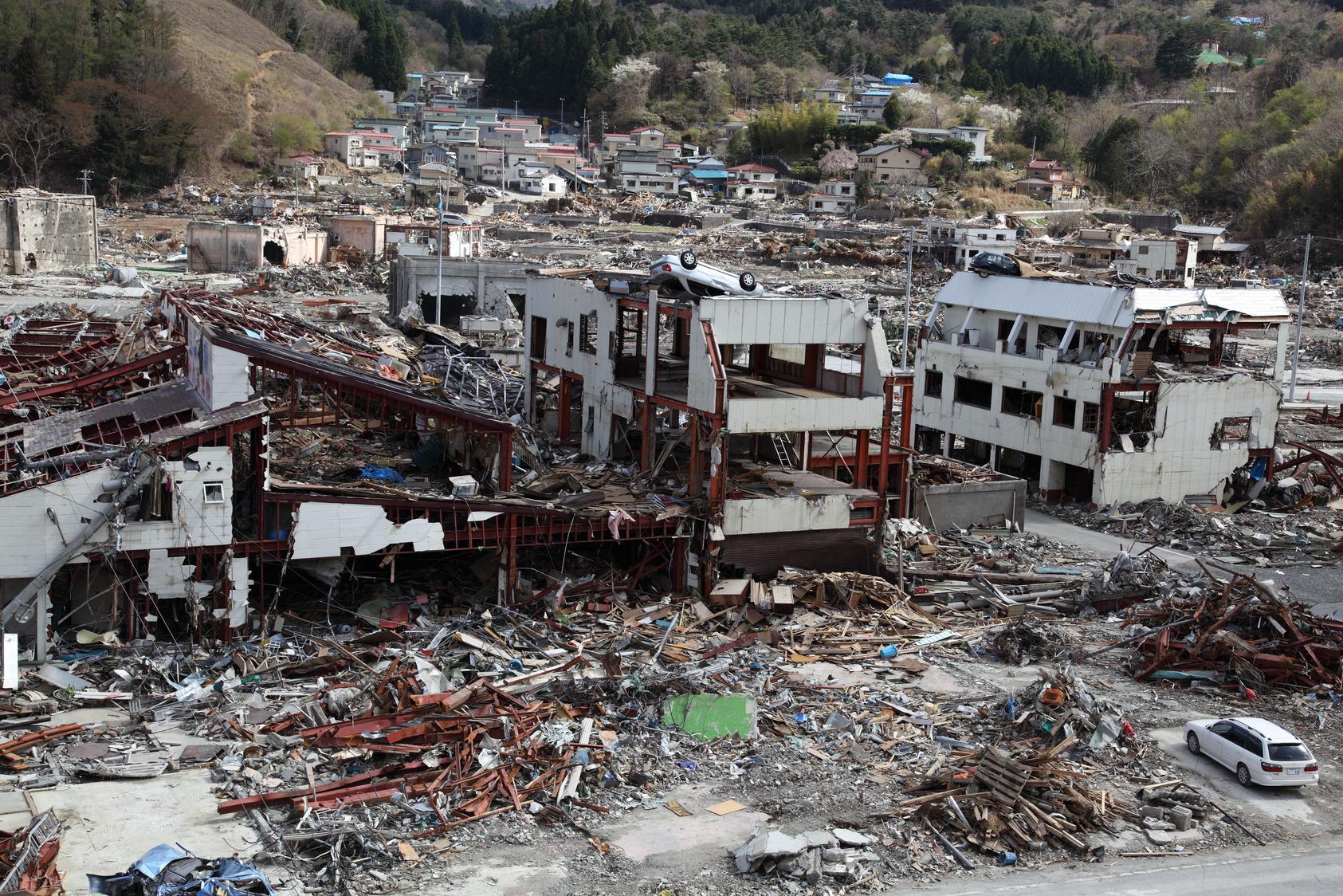
 Volcanoeruptions, earthquakes,and
Volcanoeruptions, earthquakes,and

accesstoresilientbuildingsandinfrastructure
Innovations in engineering, such as those developed for extreme environments like future Martian colonies, can contribute advancedmaterialsandtechnologiesforuse on Earth, particularly in mitigating the effects of earthquakes and extreme temperatures.
The civil construction sector is crucial in improving the global economy by driving recovery after natural disasters and in the preventionstageofsuchimpacts.
The reconstruction of infrastructure and housing generates employment, stimulates economicactivity,andencouragesinvestment in development projects. Additionally, promotingresilienceandadaptationtonatural risks helps reduce communities' vulnerability to future disasters, thereby enhancing economic stability at both national and internationallevels
The civil construction sector is a key engine for sustainable economic growth. It must be at the forefront of introducing space-based data and derived knowledge to improve human resilience on Earth. There is also a need for increased awareness of the relationshipbetweensocietiesandtheir
land.Usingspace-basedinformation,efforts should be made to reconsider human settlement patterns and avoid construction inhigh-riskareas.
In this regard, the private construction sector must adopt best practices to enhance risk awareness and offer safer alternatives for future development Harnessing space-based technologies and promoting greater awareness of societal vulnerabilities can create a more secure and prosperous future forall
 3DMarsRoverExplorestheSurfaceofMars
3DMarsRoverExplorestheSurfaceofMars

MAXIMIZING IMPACT IN MAXIMIZING IMPACT IN THE BOARDROOM: AN THE BOARDROOM: AN INSIDER PERSPECTIVE INSIDER PERSPECTIVE
Expert Opinion: Raphael Albergarias, Ph.D., IPMA-A, is an Entrepreneur, CEO, Board Member, and InternationalProjectManagementexpert,istheInterviewer.

Ph.D., IPMA-A. Our expert in the field has navigated the complex waters of corporate consulting, executive education, and public administration with the finesse of a seasoned strategist, particularly noted for his tenure as the Subsecretary of State in Rio de Janeiro, Brazil.Withexperiencefromleadingextensive government projects to implementing sophisticated ERP systems, he brings knowledge from a $22 billion portfolio of initiatives
Holding a formidable academic background with degrees in Business Administration, an MBA in Project Management, and a Master of Science in Business Administration, he further enriches his intellectual arsenal by pursuing a Doctorate in Cognitive Psychology at the University of Paris 8. A plethora of international courses from prestigious institutions like Stanford and Cambridge complementshisacademicjourney
A respected professor, he imparts wisdom in MBA, Master's, and Doctoral programs across numerous esteemed universities around the globe.Hisvastteachingfootprintincludes
France, the United States, the Netherlands, and many institutions in Brazil, earning him international acclaim as a speaker and educator
Ontheorganizationalspectrum,hisleadership is evident. As the founder and President of IPMA Brazil, a Brazilian Delegate to IPMA, and anIPMACertificationAssessor,hehasshaped the contours of project management standards His entrepreneurial spirit is showcased in his founding of the Institute of Development in Management and Projects, a beacon for IPMA consultancy and training in Brazil, and his pioneering leadership in healthcare project management at the global level
As the President of the International Institute of Education, he orchestrates the internationalization of education programs, overseeing doctoral and professional master's programs that bridge continents and disciplines His professional credentials are as comprehensive as they are impressive, marked by a history-making moment in 2010 when he became the first Brazilian to obtain a full suite of the world's most prestigious project management certifications We sit down with a strategist, educator, and leader whose insights promise to illuminate the future of project management and strategic development.
Q1: Dear Professor Raphael Albergarias, Ph.D.,IPMA-A,thankyouforyourinvaluable contributions to this field of expertise. Professor, many executives inquire about project management's true value and applicability. Is it only about investing time and money to ensure good project management?
Indeed,manyexecutivesinquireaboutproject management's true value and applicability in their companies. If you've heard about it in a lectureorifyou'retiredofyouroldfriendand
enthusiast of the idea constantly discussing it, you must have also wondered the same thing: how worthwhile is it to invest time and money to ensure good project management? This same question has been asked and repeated by various people involved in projects of differentcomplexitiesandindustries
Redefining Project Management: Beyond Tools to Transformation in a Globalized World
Wemustgobackintimetobetterunderstand where it all began Since the time of the pyramids, issues and concepts related to project management have been felt The term "work" was scientifically defined by Frederick Taylor (1856-1915), the first to consider a type of process design. However, it was only after the war that project management techniques were defined and grouped to be considered a discipline
IntheUnitedStates,theprimarycatalystfor this event was the American Department of Defense, which, through initiatives like the Polaris program (1957-58), leveraged network diagramming tools such as PERT (ProgramEvaluationandReviewTechnique) and many others terms used today, such as the"warroom."
After the military, sectors such as construction, automotive, film, and aerospace were major sponsors of the discipline's growth, quickly realizing how muchtheycouldbenefitfromthisapproach. Managing multidisciplinary teams and achieving unique objectives within finite periods and resource constraints seemed more feasible. And every day, new studies and techniques emerge that support the knowledge areas of project management. Concepts such as "projected" companies, PMO (Project Management Office), robust planning and control software, and management methodologies are increasinglypresentdaily.
Like everything in life, this movement did not happen by chance. To understand the meaning of such a revolution, we must observe the context of our world today Nothing is safer to assert than to affirm that nothingissafeanymore
Companies and their professionals today undergo continuous change processes to evolve according to the directions the world indicates. No matter how different the opinions may be, the effects of globalization, the technology that surrounds us, the aspirations of the society we are part of, and especially the increasingly impatient, intolerant, and demanding customer, who is ourselves,cannotbeignored
Thoughtsonqualityhaveevolveddramatically since Deming, Crosby, and Juran The trend is that quality becomes a commodity in a world where the experience provided by products and services has become the key to satisfaction. But this evolution is not trivial. Adaptability is necessary, often changing the modus operandi and way of thinking to evolve every new step is a change, and with each change,anewproject
The process-based view gave rise to the traditional process-based project managementview.
Q2. Professor Raphael Albergarias, Ph. D., IPMA-A, why does the traditional project management view not generate effective results?
Simple: it goes against the nature of the project phenomenon! The traditional approach, segmenting knowledge areas and projectlifecycles,orientedtowardsprocesses, is contrary to the nature of the project But why has it been so successful? Because it simplifiesreality!
The nature of the "project" phenomenon is not fully explored because it is complex. In congresses, articles, and reflections, I arrived atsomepossibledefinitions:
Aprojectisaninterventioninaperennial system,creatingatemporalstructurefor optimizing the system and enhancing its performance.
A project is the identification of an improvement in the status quo, which aimstobreakwiththecurrentreality. A project is an exercise of the human psyche in seeking to change reality until findingitscomfortzone.
Boutinet (1999) encompasses a comprehensive definition, looking at the project phenomenon from the perspective of anthropology.Hepointsoutthateveryproject presupposes a rupture with the present and promisesforthefuture.
Designing means trying to break a comfortable state to risk, go through a period of instability, and seek stability based on the promise that each project contains a better state than the present. A project can be taken as a promise in the face of certain ruptures Promises make visible the fields of possible action, committing their actors and authors Within this logic, the concept of psychological contractalignsperfectlywiththeperfectionof amelody.
Looking more deeply into some of these definitions, the oversimplification of the concept used as the basis in the traditional viewbecomesfarfromitsrealmeaning
The dominant logic in traditional project management comes from the 1980s when the Cartesian view of the world still needed to have the processing capacity derived from micro-computing Quality management tools were a great novelty at the time Total Quality Management(TQM)andthebusinessprocess model (BPM) later brought the logic of reengineering Until then, everything was under control, and the focus on quality, production life cycle, and cost reduction was the center of attention The number of interactionswasdifferent.
The illustration below is a metaphor, allowing us to observe our relationship with virtual spaceinthepastcomparedtotoday Herelies much of the dissonance of traditional project management:
it uses the process phenomenon and its managementlogictodealwithaphenomenon that is the opposite! I want to explain better: "Process is the sequence of activities performed in generating results for the customer,fromthebeginningoftheorderto the delivery of the product. According to another more modern, multidisciplinary concept, is the synchrony between inputs, activities, infrastructure, and references necessary to add value to the human being" it is the synchrony between inputs, activities, infrastructure, and references necessary to add value to the human being," is a phenomenon focused on replicability and repeatability so how to use tools from a phenomenonbasedonperpetuatingitself,ina phenomenon that is its opposite? A project is unique!
Having a standard, with a general view of which elements to look at for more effective project management, is interesting; it helps establish a common language; however, this can be the beginning of the journey. I say this because, from the 1990s onwards, we recognized the phenomenon of globalization and the consequent need for interaction among various peoples, cultures, and languagestodelivermultidisciplinary
From then on, integration and hypercompetitive environments began to emerge organizations had to find a way to survive by adapting to the environment This constant adaptationoftheirproductsandservicestofit the new unified culture accelerated the product lifecycle and, consequently, the technologiesinvolved.

Brazil's most well-known reference in project management was born during this time In 1996, as if by magic, the product tree concept became the basis of planning as if by magic, the solution of how to manage projects based on a standard would solve any difficulties encounteredalongtheway
The point is that until that moment, this could have been valid. However, the internet and mobility have reached a level where we are always connected. Please take a look below, which is an example of how virtual space has come to life and inundates us with real-time information
Q3:AndProfessor,withsomuchtechnology andinteractivity,howishumaninteraction?
In organizations, it has returned to the center ofdiscussions.Technicalprojectmanagement tools are helpful. However, they cannot guarantee that an individual can make a practical application; however, this new condition makes the project manager's life morechallenging
In this scenario, complexity (which, for this post, means weaving together) leads to the manager's challenge to develop a systemic vision for both his and the team Their ability to combine various tools to address new problems and configurations of reality is the key to competitiveness. It's not about the tool but about the results and benefits achieved! Integration between business vision (results), people (wants), and appropriate tools is the key to project management in an era where today's truth is tomorrow's obsolescence Flexibility in actions and configuration of skills (creating a team as a neural network) is the expectedprofile.
How do we develop this project management professional? The first step is to have a way to measure what competencies are in this context. With this anamnesis, it is possible to guide the professional on which points to developandwhichpathtofollow
For the company, this measurement assesses the complexity capacity in projects that the individualcanhandleinprojectmanagement.
Imagine an organization's Human Resources department can map the competencies of project management professionals and allocate them according to their proven competencies! Dream? No! Reality. The competency model provided by level is a possible path (IPMA Individual Competence Baseline) In addition to presenting metrics to the organization, it can be the basis for a projectmanagercareermodel
The fact is that beyond technical competencies, a phenomenon that develops in the context of contextual (organizational culture) and behavioral (individual culture) competenciesisthepsychologicalcontract

Tounderstandthedevelopmentofastructure aimed at building competencies in generating performance, a crucial issue is keeping the team committed to the organization's results. In the project management market, the need for more commitment is notoriously observed, where the temporary nature of the activity tends to generate a high turnover, which can be a factor that threatens value generationandknowledgemanagement
Attracting and retaining committed people who add value to the organization is a central issue in understanding organizational behavior. One approach to understanding this issue is to create a psychological contract for the professional with the company. Thus, psychological contracts are individuals' beliefs about the reciprocal obligations between them and their organizations
Focus on the traditional view? I am confident about the importance of technical tools; however, we must remember that project management is an applied social science, and as such, cultural phenomena, both organizational and territorial, are determining factors in the project manager's decisionmaking! Tools and techniques are part of it, buttheygeneratenovaluewithoutpeople!

A VISIONARY APPROACH A VISIONARY APPROACH TO CONSTRUCTION TO CONSTRUCTION
PROJECT MANAGEMENT
PROJECT MANAGEMENT
Expert Opinion: Lucas Banhara Boardman is an Entrepreneur and Investor. Construction, Civil Engineering,andProjectManagementExpert.
|The construction sector is undergoing significant changes, and project management has become pivotal in shaping the direction of hotel development and revitalization Understanding the evolving landscape of the construction industry and how effective project management can drive its success is essential for emerging leaders and the economicwell-beingoftheUnitedStates.
To explore how project management influences the industry's transformation, one must grasp cost efficiency, adherence to changing regulations, and fostering stakeholdercollaboration.
The essence of project management in construction lies in financial management, which guides projects strategically Resource allocation can make or break a project's economic success in construction. Effective cost management serves as a strategic guide directing projects toward stability The ability to negotiate, predict, and handle finances efficiently ensures that hotel construction projects stay within budget from start to finish.
Project managers are crucial in managing project finances to ensure economic stability and long-term success. They oversee the entire budgeting process, from estimating costs to tracking expenses, ensuring everything stays within the budget whiledeliveringqualitywork.
Effective scheduling is another crucial aspect of project management. Building hotels that blend elegance with functionality requires precise scheduling management Successful project managers carefully plan tasks to minimize delays and enhance performance.
This aspect significantly impacts industry revenue and emphasizes the essential role of time management in bringing projects to fruitionasplanned
Navigating through regulations in the postpandemiclandscapeisachallengingtaskfor project managers, akin to navigating a maze. They ensure that hotel constructions comply with evolving safety standards, prioritizing the well-being of workers and future occupants Recent global events have underscored the need for adaptability and forward thinking to alignprojectgoalswithrequirements.
Managing contracts for hotel projects is anothercriticalelementthatrequiresskillful coordination. Project managers ensure that each agreement supports the project's objectives, promoting stakeholder relationships. This aspect ensures that every contractual arrangement contributes to the progressofconstructionendeavors
The construction field in hotel development is on the brink of a new chapter, with the blend of residential and municipal building sectors creating a canvas filled with opportunitiesandobstacles.
Effectiveprojectmanagementconnectsthese different elements, shaping projects that resonate with today's travelers' desires and theneedforsustainablegrowth.
Our expert leading the way in this changing landscape is Lucas Banhara Boardman, an expert in project management whose knowledge and forward-thinking approach have guided successful hotel projects. With a track record spanning significant endeavors, Lucas Banhara Boardman embodies strategic planning, innovation, andflexibility.

LucasBanharaBoardmanisanachievedCivil engineer and project manager with extensive experience in various kinds of construction, including subways, cable cars, bridges, paving, landscaping, draining, sanitation,slopecontainment,urbanization, buildings, demolitions, and infrastructure construction.
His project management strategy goes beyond limits by combining advanced technologies and eco-friendly practices to redefine what can be achieved in hotel constructionandrenovation.
Due to his record of business achievements and expertise throughout over twelve (12) years of work experience, Lucas Boardman’s direct knowledge of the business and engineering industries benefits many U S companies and individuals who need qualified professionals with expertise in civil engineering, project management, contracting, subcontracting, cost controls, businessmanagement,budgeting,andhuman resource management His knowledge and connections have assured his success in the steadyandstrongcompanyoperationsflow
Toexplorefurtherhowprojectmanagementis implemented in construction projects, we interviewed him at his New Jersey headquarters, where he revealed the opportunities for the U.S. economy and highskilledprofessionalsinthisarea.
Q1: Lucas, can you share an example of how strategic cost management influenced the outcomeofahotelproject?
Strategic cost management is pivotal in influencing the outcome of a hotel project, as it directly affects the project's financial viabilityandoverallsuccess
For instance, all our clients benefit from an advanced cost-monitoring system implemented at the inception of all hotel projects Thismethodology,andconsequently our system, enables real-time tracking of expenditures against the budget, allowing for immediate corrective actions if costs start to deviate. In one case, this system identified that the cost of materials was running 10% higher than planned due to market volatility. By quickly negotiating with suppliers and exploring alternative materials without compromising quality, my team brought the costsbackinlinewiththeoriginalbudget
Additionally,strategiccostmanagementoften involves value engineering re-evaluating the design and construction methods to deliver thedesiredoutcomeatalowercost Ionceled a project where replacing traditional on-site construction methods with prefabricated modules for specific hotel components resulted in a 15% cost savings, accelerated construction timelines, and minimized waste.
Such strategic decisions keep the project financially on track and ensure that it can proceed without compromising the project's quality or scope This can lead to better investment returns, an enhanced reputation for stakeholders, and a competitive edge in themarketuponthehotel'scompletion
Q2: How has scheduling management evolvedwithtechnologicaladvancements?
Thanks to technological advancements, scheduling management in construction has madesignificantstridesforward

These innovations have enabled project managers to execute tasks with greater precision,efficiency,andcollaboration.
Software platforms like MS Project or Primavera have long been staples in project scheduling However, newer, more sophisticated tools have emerged, integrating cloud-based systems and allowing real-time collaboration. Managers can now update schedules from the field, and teams can access the most current plans instantaneously, ensuring everyone is aligned withthelatestprojecttimeline
Artificial Intelligence (AI) and Machine Learning (ML) algorithms are increasingly being deployed to predict project timelines. They analyze historical data to forecast potential delays and suggest more efficient workflows Thispredictiveschedulingcanhelp identify bottlenecks before they become critical,savingtimeandresources.
Building Information Modeling (BIM): BIM technologyhasrevolutionizedschedulingby providing 4D simulations (3D models with time added as the fourth dimension). This allows for the visualization of project progression and can be used to simulate differentsequencingscenariostooptimizethe build order, identify conflicts, and streamline schedules
Internet of Things (IoT): IoT devices are beingusedtotrackthelocationandusageof materials and equipment on-site. This information feeds into scheduling tools, ensuringthattheavailabilityofresourcesis
Mobile Technologies: With the ubiquity of smartphonesandtablets,mobiletechnology has become integral to scheduling management. Mobile apps enable updates on the go and can notify teams of schedule changes, ensuring they have the latest informationnomatterwheretheyareonthe site.
A recent client engaged our organization to lead his hotel renovation project, which needed to catch up due to unforeseen structural issues The project team quickly adjusted the schedule using BIM to accommodate the additional work. AI analysis of the delay's impact suggested adjustments to other non-critical path activities, minimizing the delay's overall impact Meanwhile,IoTdevicestrackedtheavailability of necessary equipment, ensuring it was onsite when needed, and the collaborative platforminformedallstakeholdersinrealtime. The result was a project that, despite initial setbacks, was completed on time and within budget
“The evolution of scheduling management through technology has brought about a new era in construction project management, marked by increased efficiency, accuracy, and collaboration.” LucasBoardman.
These advancements improve project outcomes and provide a competitive edge to firmsthatadoptthem.
One such technology is using artificial intelligence(AI)inprojectscheduling
In traditional project management, delays are common and significantly impact the timeline and budget. However, these delays canbebetterunderstoodandmanagedwith AIanalysis.Asseenintheexampleabove,AI could analyze the impact of a delay on noncritical path activities and suggest adjustments to minimize its overall effect. This proactive approach allowed for swift decision-making and ensured the project stayedonschedule.
Also, using Internet of Things (IoT) devices adds another layer of efficiency to project scheduling. These connected devices can track equipment availability in real time, ensuring that necessary resources are onsite when needed. This eliminates potential delays caused by equipment unavailability andallowsforquickerresponsetoanyissues thatmayarise.
With remote work becoming more common in today's workforce, project management software has become essential in keeping teams on track. Collaborative tools like Asana, Trello, and Basecamp allow team members to communicate and coordinate their tasks anywhere in the world. This promotes efficient collaboration across different time zones and ensures that projects are completed within the designatedtimeline.
Q3: In what ways has compliance management become more complex in recentyears?
Compliance management within the construction industry has become more intricateinrecentyears,particularlyinhotel projects.Thecomplexityarisesfromseveral factors that demand a strategic and informedapproachattheC-level.
Expansion of Regulatory Landscape: The body of construction regulations has grown, with an increased focus on environmental sustainability, energy efficiency, and accessibility. For instance, adopting LEED certification requirements and ADA compliance has introduced new layers of complexity to compliancemanagement.
Health and Safety Protocols: Recent global health events have improved workplace health and safety standards, which may include social distancing measures, sanitation protocols, and ventilation requirements Each adds layers of operational complexity to managing a constructionsite
Technological Integration: With the increasing use of technology in construction, compliance now extends to cybersecurity measures, data protection laws, and the safe operation of digitally integrated systems such as BIM and IoT devices on construction sites.

International Standards: Compliance management has become more challenging for multinational companies duetotheneedtoadheretoapatchwork of international standards and regulations. This is particularly relevant when sourcing materials or subcontractingworkinternationally.
Risk Management: Compliance now intersects significantly with risk management. Project managers must anticipatepotentialcompliancerisksand their timeline and budget implications. This proactive stance on compliance is crucial in preventing costly legal and regulatoryrepercussions.
I was recently invited to assess a high-rise hotel project in a dense urban area. The project navigated a complex web of city ordinances, environmental impact assessments, and traffic congestion regulations. Moreover, mid-construction, new zoning amendments required a rapid compliance strategy realignment. With deep expertise in regulatory affairs, my team and I were able to adjust the project scope and execution plan, incorporating these changes seamlessly, thereby avoiding delaysandadditionalcosts.
The increased complexity of compliance management requires C-level executives to have a comprehensive understanding of the evolving regulatory environment, invest in the right technologies and talent for proactive compliance monitoring, and ensure open lines of communication with regulatory bodies. This sophisticated approach to compliance management is not just about adhering to the rules it's about integrating these requirements into the very fabric of the project management process to ensure successful and sustainable project outcomes
Q4:Weunderstandrecruitmentremainsone of the main challenges for this industry. But in your opinion, which states and regions in the U.S. do you anticipate being more attractive for talented professionals in the nextfiveyears?

Q4:Weunderstandrecruitmentremainsone of the main challenges for this industry. But in your opinion, which states and regions in the U.S. do you anticipate being more attractive for talented professionals in the nextfiveyears?
Recruitment within the construction industry reflects a complex landscape impacted by economic trends, regional developments, and the evolving demands of the workforce Improving workforce training and assessing talented professionals authorized to work and liveintheU.S.ischallenging.
We also have to take into consideration that this industry has entrepreneurial characteristics
Anticipating the attractiveness of different U.S.regionsfortalentedprofessionalsinvolves considering many factors, including economic growth, infrastructure investment, quality of life,andprofessionalopportunities
I anticipate the six most attractive areas to construction professionals specializing in project management. They are definitively the Northeast Corridor, certain areas in the Midwest, Sun Belt States, The Pacific Northwest,andsomeSoutheasternStates.
Northeast Corridor: Despite the high cost of living, the Northeast Corridor, including New York, New Jersey, and Massachusetts, will continue to attract professionals due to its concentration on large-scale projects and therenovationofaginginfrastructure.
MidwestRevival:certainareasintheMidwest, especially cities like Minneapolis and Chicago, are undergoing a revival with significant investments in public infrastructure and commercial redevelopment. These cities offer a competitive cost of living and a strong sense of community, which could be critical factors inattractingtalent
Sun Belt States: Texas, Florida, and Arizona have been experiencing significant populationgrowthandeconomicexpansion. Our industry is booming over there. This trend is anticipated to continue, fueled by a favorable climate, lower cost of living, and ongoing investments in infrastructure and commercial projects. The influx of technology companies and startups also diversifies job opportunities beyond traditionalconstructionroles.
Pacific Northwest: the Pacific Northwest, particularly Washington and Oregon, has been a hub for green construction and sustainable development projects. With a strong emphasis on environmental stewardship, these states offer construction professionals opportunities to engage with innovative, eco-friendly construction practicesandtechnologies.
Southeastern States: North Carolina, Georgia, and Tennessee are becoming increasingly popular due to their growing technology sectors, urban development projects, and revitalization initiatives. The promise of a balanced lifestyle and a surge in construction projects could make these areas highlyattractivetoskilledworkers
Consider the case of Austin, Texas, which has become a microcosm of construction industry growth. The city has seen a residential and commercial construction explosion driven by technology firms establishing a significant presence there The city's commitment to sustainabledevelopmentandthevibrant
cultural scene have made it a magnet for young professionals, including those in the constructionsector
Consider the case of Austin, Texas, which has become a microcosm of construction industry growth. The city has seen a residential and commercial construction explosion driven by technology firms establishing a significant presence there The city's commitment to sustainable development and the vibrant cultural scene have made it a magnet for young professionals, including those in the constructionsector
In recent years, the construction industry in Austin has been booming. This can be attributed to several factors, including the influx of technology companies and the city's focusonsustainabledevelopment
Austin is home to some of the biggest technological names, such as Dell, IBM, and Apple. These companies have expanded their presence in the city, attracting a talented workforce and creating a demand for new residential and commercial developments As a result, there has been a significant increase inconstructionprojectsacrossAustin


BRIDGING THE GAP OF BRIDGING THE GAP OF COMMUNICATION IN CIVIL COMMUNICATION IN CIVIL
CONSTRUCTION CONSTRUCTION
Expert Opinion: Igor Siqueira is an Entrepreneur and expert in Consulting and Management for the ConstructionIndustry.
Bridging the Gap of Communication: The Role of Construction Supervisors in Enhancing Procedures, Team Development, andSafety
The construction industry's continuous evolution underscores the critical role of construction supervisors in achieving projectsuccess.
These professionals excel in fostering efficient procedures, nurturing team development, and ensuring safety, making them indispensable to the sector's growth andcontributingtoeconomicprosperityand qualityoflife.
Recent data from the U.S. Bureau of Labor Statistics (BLS) and insights from industry associations like the Associated General Contractors of America (AGC) provide a comprehensive outlook on the demand and opportunities for construction supervisors, reinforcingtheirsignificanceintheindustry.
The Indispensable Role of Construction Supervisors
Construction supervisors bridge the gap between strategic planning and on-ground operations, ensuring projects are completed within budget and regulatory standards. With employment in the construction sector projected to grow 5% from 2019 to 2029, the demand for skilled supervisors is more prominent than ever, highlighting their pivotal roleinnavigatingtheindustry'sexpansion.
Effectivecommunicationisvitalforsuccessful project management, and construction supervisors are crucial in facilitating clear information flow among stakeholders. This ensuresprojectobjectivesareunderstoodand metefficiently,withsupervisors'critical
thinkingandactivelisteningskillsareessential in decoding complex requirements and formulatingactionablestrategies.
The dynamic nature of team dynamics in construction projects requires adept supervisorleadership,especiallyinadaptingto challengeshighlightedbyrecentglobalevents like the COVID-19 pandemic. Supervisors' role in identifying individual strengths and promoting a collaborative environment is crucial for professional growth and resilience.
Safety remains paramount, with construction supervisors at the forefront of implementing and monitoring safety protocols to protect workers Their commitment to conducting regular safety audits and training significantly mitigates workplace accidents, emphasizing theirroleinenhancingworkers'qualityoflife
Rapid technological advancements and evolving regulatory landscapes present challenges that construction supervisors are well-equipped to navigate Staying updated with technologies like Building Information Modeling (BIM) and sustainable building practices ensures projects are efficient, accurate,andenvironmentallyresponsible.
The demand for skilled construction supervisors opens many opportunities for professionals and entrepreneurs, with a medianannualwageof$101,480inMay2022 reflectingthecareer'slucrativepotential.
The industry's shift towards green building and sustainable design further broadens the horizon for innovation and entrepreneurship, particularly for those willing to explore new regionsandmarkets.
Construction supervisors are vital in enhancing procedures, team development, andsafety,drivingtheindustryforward,and improving economic growth and quality of life. Recognizing their value and leveraging authoritativedataandinsightsisimperative for industry stakeholders to stay at the forefrontoftrendsandopportunities.
As the construction industry continues to evolve, the demand for skilled construction supervisors is set to remain robust, offering significant opportunities for professionals in thisfield

Igor Gomes Rangel Siqueira brings solid experience from the construction, oil, and metallurgical fields. A Production Engineer with a career marked by leadership roles over the last almost ten years, Igor excels in teammanagement,planningandproduction control,andclientrelations.
His commitment to continuous process improvementandthesafetyofequipmentand professionals has been evident throughout his career, spanning notable positions such as Managing Director and Industrial Manager at leadingcompanies.
Q1: Can you describe how the role of construction supervisors has evolved over theyearsinensuringprojectsuccess?
The role of construction supervisors has seen a significant transformation, especially with the advent of digital technologies and advanced project management tools Initially, our focus was predominantly on on-site supervision and manual coordination. However, today's supervisors must deeply understand Building Information Modeling (BIM), sustainability practices, and safety protocols For example, in one of our projects, implementing BIM significantly enhanced our team's ability to visualize project outcomes, leading to improved decision-making and efficiency. Supervisors now play a critical role in bridging the gap between traditional construction practices and innovative technological solutions, ensuring projects are completed on time and within budget and meet modern sustainability and safety standards.
During my initial steps in this career, I focused on hands-on experience in enhancing operational procedures, fostering team development, and implementing rigorous safety standards, which led me to the leadership position. My solid educational background gave me the technical and operational knowledge necessary to excel in oil, civil construction, and metallurgy But, to continue succeeding in the construction industry, one needs to constantly improve on theevolvinglandscape.
Q2: How do construction supervisors enhance team development and maintain highmoraleon-site?
Construction supervisors are pivotal in fostering a culture of teamwork and high morale. They achieve this by recognizing individual team members' strengths and assigning tasks aligning with their skills, enhancingjobsatisfactionandproductivity
Forinstance,onarecentproject,weidentified a team member with exceptional problemsolving skills and assigned him the task of troubleshootingunexpectedchallenges.
This not only empowered the individual but also motivated the entire team, as it highlighted our commitment to personal and professional development Supervisors also maintain high morale by ensuring clear communication, providing constructive feedback, and celebrating milestones, collectively contributing to a positive and collaborativeworkenvironment
Q3: Given recent global events like the COVID-19 pandemic, how have best construction supervisors adapted their strategies to ensure project continuity and workersafety?
The COVID-19 pandemic posed unprecedentedchallengestotheconstruction industry, necessitating swift adaptation by supervisors. We implemented comprehensive safety protocols, including social distancing measures, regular health screenings, and enhanced sanitation practices, to ensure the well-being of our workforce Additionally, we leveraged digital communication tools to facilitate remote meetings and maintain project momentum despite physical distancingrequirements
For example, we utilized drone technology for site surveys, which minimized the need for physical presence on-site while ensuring detailed monitoring of project progress. These adaptations safeguarded our team's health and demonstrated our resilience and ability to maintain project timelines under challengingcircumstances.
Q4:IgorSiqueira,canyoushareexamplesof how construction supervisors have successfully navigated the complexities of environmental regulations and technological advancements in recent projects?
Navigating environmental regulations and technological advancements requires a proactive and informed approach On a recent project to achieve LEED certification, our team,ledbytheconstructionsupervisor,
conducted thorough research on sustainable building materials and waste reduction techniques This involved close collaboration with environmental consultants to ensure compliance with stringent regulations, ultimately resulting in a project that met and exceeded ecological standards Additionally, incorporating solar panels and intelligent building technologies exemplified our commitment to embracing advancements for energy efficiency and operational savings. Such initiatives underscore the critical role of supervisors in steering projects toward sustainabilityandinnovation
Q5: How do construction supervisors communicate and coordinate effectively amongdiverseprojectstakeholders?
Effectivecommunicationandcoordinationare achieved through strategic planning and collaborative tools Construction supervisors are crucial in establishing clear communication channels among architects, engineers, clients, and the construction team. For example, project management software allows real-time updates and feedback, ensuring all stakeholders are informed of project progress and any issues are promptly addressed Regular stakeholder meetings, clear documentation, and open lines of communication are vital strategies that supervisorsemploytofostercollaborationand ensure that project objectives are aligned and met
Q6: What role do construction supervisors play in promoting safety and reducing workplaceaccidents?
Promoting safety and reducing workplace accidents are among the top priorities for construction supervisors, if not the most criticalaspectofourrole.Theyachievethisby conducting regular safety training sessions, enforcing compliance with safety protocols, and leading by example on the job site For instance, introducing a safety incentive program that rewards teams for achieving accident-free milestones has proven effective in promoting a safety-first culture. Supervisors also conduct daily safety briefings and ensure that all equipment and machinery are regularly inspected and maintained By prioritizing safety, supervisors protect the workforceandenhanceproductivityand
project outcomes by minimizing disruptions causedbyaccidents
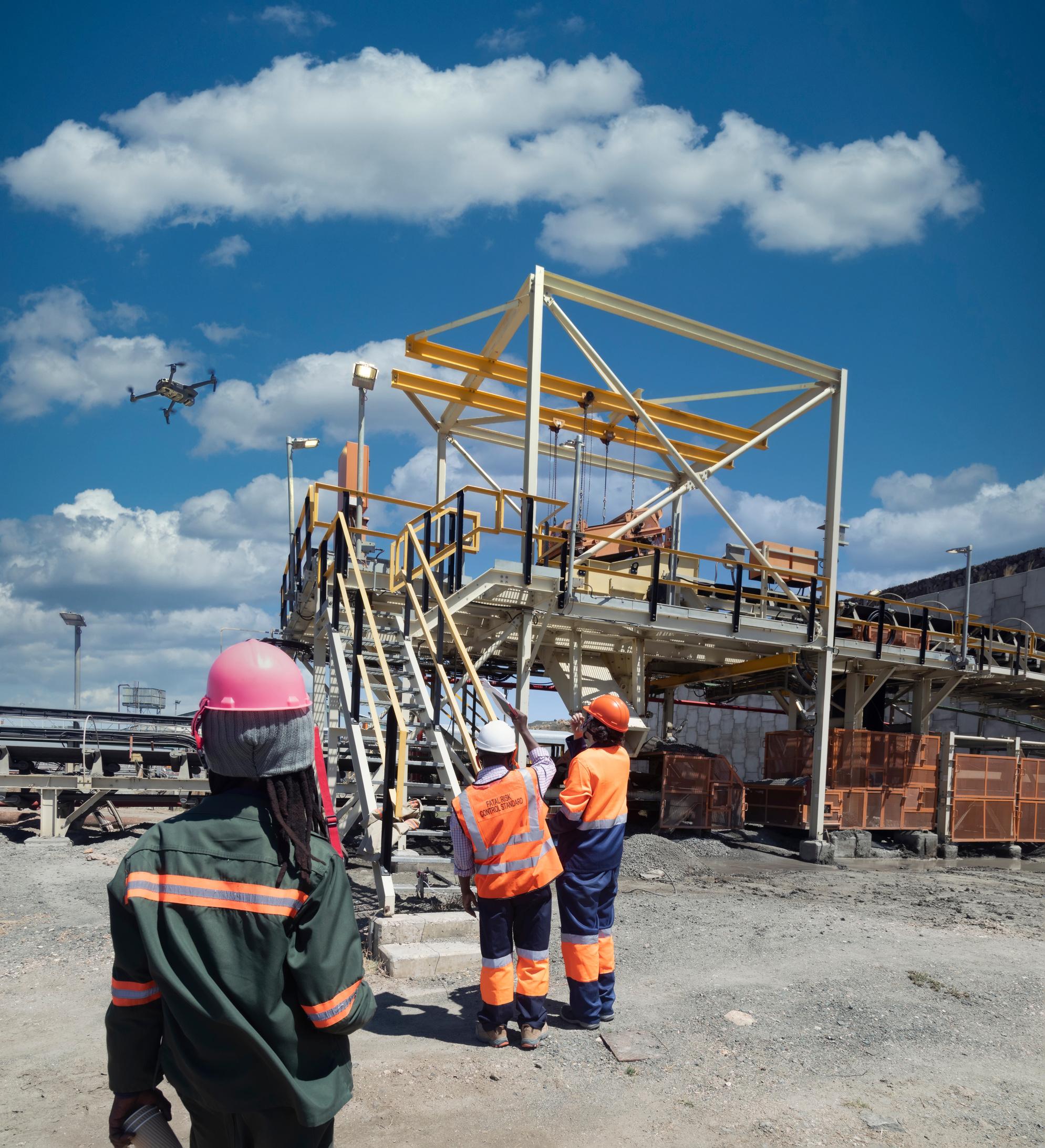
Q7: Looking ahead, Igor, what emerging trends do you believe will shape the future roleofconstructionsupervisors?
Several emerging trends, including the increasing integration of digital technologies, a greater focus on sustainability, and the adoption of modular and prefabricated construction methods, shapeconstructionsupervisors'futureroles.
For example, using artificial intelligence for predictive analysis can optimize scheduling and resource allocation, while virtual reality tools can enhance training and safety simulations
Supervisorsmuststayinformedaboutgreen technologies and materials as the industry shiftstowardsmoresustainablepractices.
Additionally,theriseofmodularconstruction offers opportunities for efficiency gains but requires supervisors to adapt their project management approaches. Adopting these trends will be crucial for supervisors to lead their teams effectively in the evolving constructionlandscape
As construction becomes more digitized, supervisors must possess strong IT skills to manage data effectively and communicate withstakeholders
This includes knowledge about energyefficient design, renewable energy sources, andlow-emissionmaterials
Q8: Considering the regional growth trends in the U.S., which states do you believe are currently the most promising for constructionsupervisorsandwhy?
Recent data and industry reports show that states like Texas, Florida, and California are among the most promising for construction supervisors.
Texas's booming economy and expanding urban centers offer vast residential and commercial construction opportunities.
Florida's continuous growth in the tourism and retirement sectors drives demandfornewconstructionprojects.
California's emphasis on sustainable and innovative construction practices, particularly in response to its housing shortage, presents unique opportunities for supervisors skilled in green building technologies
These states offer robust job prospects and encourage the adoption of advanced constructionmethodologies
Q9: How do the economic development initiatives in certain states impact the opportunities for construction supervisors, and can you provide examples of conditions where such initiatives have led to increased demand?
Economic development initiatives significantly impact the demand for construction supervisors by fostering a conduciveenvironmentfornewprojects.
For instance, states like North Carolina and Georgia have seen increased demand due to their aggressive pursuit of technology and manufacturing firms, leading to the construction of new facilities and infrastructure.
North Carolina's Research Triangle Park and Georgia's investment in transportation infrastructure exemplify how state initiatives can attract businesses, thereby generating numerous construction projects. These initiatives boost the economy and create substantial opportunities for construction supervisors with expertise in managing complexprojects
Q10: With the U.S. experiencing a shift towards green building and sustainable design, which states do you see as frontrunners in adopting these practices, and how does this influence the role of constructionsupervisors?
States like Oregon, Washington, and New York are front-runners in adopting green building and sustainable design practices. Oregon and Washington, with their environmentally solid ethos, have been pioneersinsustainableconstruction,heavily investing in renewable energy projects and greeninfrastructure.
NewYork'sambitiousGreenNewDealsetsa precedent for sustainable urban development, focusing on reducing carbon emissionsthroughgreenbuildingpractices.
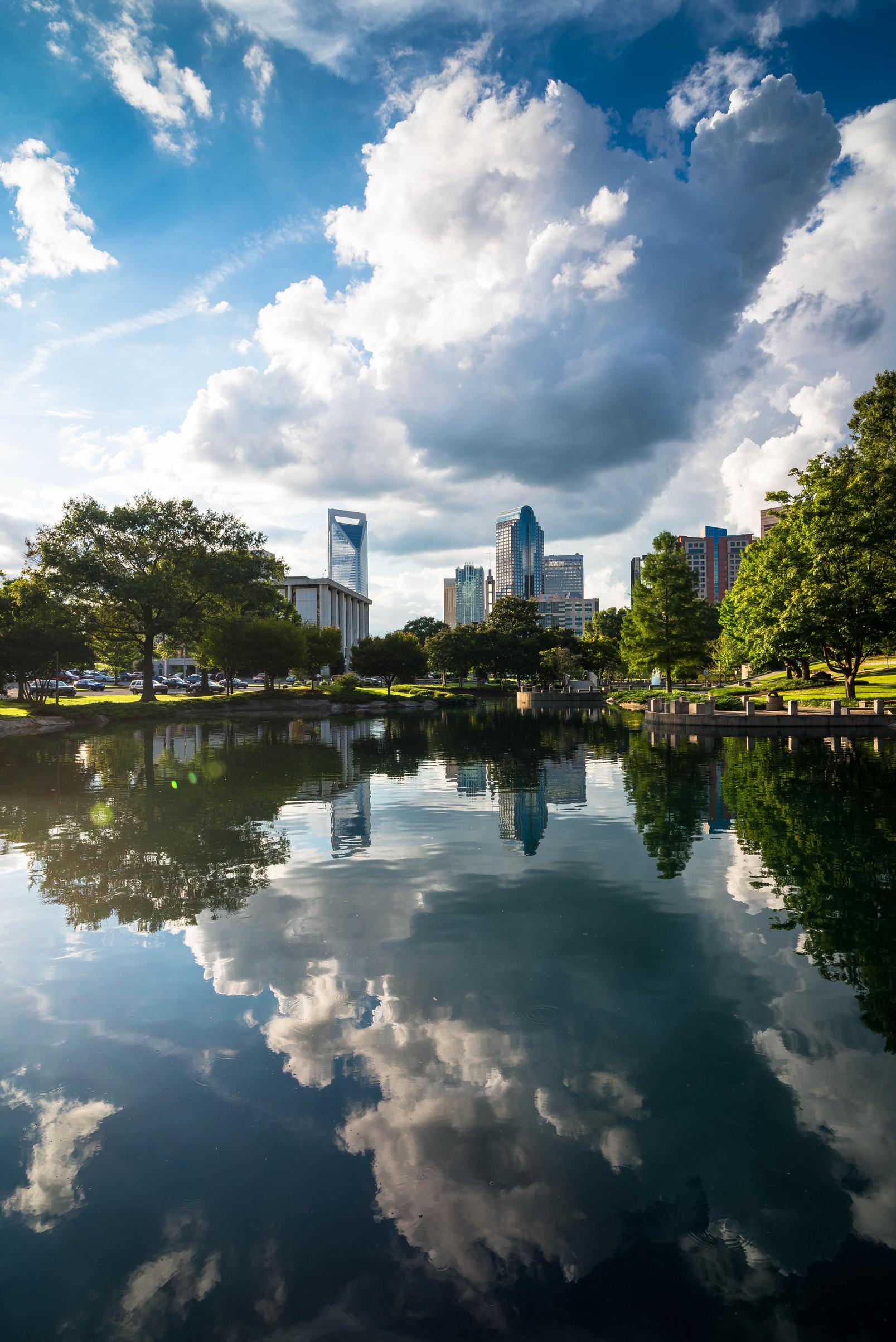
This shift necessitates a deep understanding of sustainable materials, energy-efficient designs, and compliance with environmental regulations for construction supervisors. It also opens up new avenues for specialization in green construction, enhancing their value andcareerprospectsinthesestates


THE KEYSTONE OF THE KEYSTONE OF
PROSPERITY: TOURISM
PROSPERITY: TOURISM
Expert Opinion: Danilo Dias serves as Chief Revenue Officer, Board Adviser, Start-Up Mentor, and Infrastructure Expert. Leonardo Freitas is an Entrepreneur, Chief Executive Officer, Chairman of the Board,andGlobalMobilityExpert.
The Keystone of Prosperity: Unveiling the ImpactofTourismontheU.S.Economy
The Travel & Tourism market encompasses various accommodation services catering to travelers' needs and preferences This dynamic market includes package holidays, hotel accommodations, private vacation rentals,campingexperiences,andcruises
Themarketconsistsoffivefurthermarkets.
The Cruise market covers multi-day vacation trips on a cruise ship and covers exclusivelypassengerticketrevenues
The Vacation Rentals market comprises private accommodation bookings, including private holiday homes and houses and short-term rentals of private roomsorflats
The Hotels market includes stays in hotels andprofessionallyrunguesthouses
The Package Holidays market comprises travel deals that normally contain travel and accommodation sold for one price, although optional further provisions such as catering and tourist services can be included
The Camping market includes bookings at camping sites for pitches using tents, campervans, or trailers. These can be associated with big chains or privately managedcampsites
The tourism industry is an indispensable pillaroftheU.S.economy,weavingtogether the fabric of American culture, innovation, and economic prosperity. It is a sector characterized not only by its ability to generate direct economic benefits but also by its profound impact on related sectors, community development, and the promotion ofcross-culturalexchange
This article delves into the multifaceted contributions of tourism to the U.S. economy, underscored by data from the U S Bureau of EconomicAnalysis(BEA)andtheU S Bureau
of Labor Statistics (BLS) It discusses the evolving opportunities it presents for professionalsandentrepreneursalike
World Travel & Tourism Council (WTTC) projected the sector to nearly reach its prepandemic peak by the end of 2023, with a forecasted value of $9.5 trillion, just 5% below 2019 levels. The sector demonstrated remarkable resilience, recovering more than 95% and supporting almost 22 million more jobslastyeartoreachmorethan295million globally. This represented one in 11 jobs worldwide.
The global tourism body forecasts that the sector will grow its GDP contribution to $15.5TN by 2033, representing 11.6% of the global economy. The sector will employ 430MNpeopleworldwide,withalmost12%of theworkingpopulationemployedinit.
Tourism's broad and significant economic contributionsindicateitsroleasadrivingforce inthenationaleconomy
According to WTTC’s Travel & Tourism Economic Impact 2023 Global Trends Report, the GDP contribution of the U S Travel & Tourismsectorin2023willreach$2.2trillion, and job numbers will total 17.4 million. This impressive growth was fuelled by a strong resurgence in demand from international visitors, whose spending increased by more than 150% year-on-year to reach $115 7BN in 2022 The U.S. Economy's current-dollar GDPreached,in2023,a$27.36trillionlevel.
According to the BEA, the travel and tourism industry contributed substantially to the U.S. GDP before the pandemic. Despite recent global challenges, the sector has shown remarkable resilience, underpinned by a surge indomestictravelandagradualreturnof
According to the BEA, the travel and tourism industry contributed substantially to the U S GDP before the pandemic Despite recent global challenges, the sector has shown remarkable resilience, underpinned by a surge in domestic travel and a gradual return of international visitors While gross domestic product (GDP) for the United States grew at a 5 9%ratein2021,travelandtourismGDPgrew by64 4%thatyear
Internationaltravelplaysacriticalroleinthe US economy. Before the COVID-19 pandemic, in 2019, international visitors spent $233.5 billion in the United States, injecting nearly $640 million a day into the U.S. economy. The U.S. travel and tourism industry generated $1.9 trillion in economic output,supporting9.5millionAmericanjobs and accounting for 2.9% of U.S. GDP. At 14.5% of international travel spending, international travelers spend more in the UnitedStatesthananyothercountry.
According to the International Trade Administration (ITA) National Travel and Tourism Office (NTTO), the total volume of international visitation to the United States is forecasted to increase to 77.7 million in 2024, up 10.4 million, or 15.4% from 67.3 million visitors in 2023. NTTO also estimates international visitation to reach 85.2 million in 2025, surpassing pre-pandemic 2019 visitationof79 4million AccordingtoNTTO’s forecast, the United States is on track to reach 91 million visitors in 2026, exceeding the five-year goal of 90 million international visitors by 2027 set in the National Travel andTourismStrategy.
The COVID-19 pandemic presented unprecedented challenges for the tourism sector, causing a significant downturn in international travel and putting immense pressure on related industries However, adaptability and innovation have marked the sector’s path to recovery Initiatives promoting safe travel experiences, stimulus packages,andpolicysupporthavefacilitateda rebound.Thisresurgenceisatestamenttothe sector’s capacity for resilience and the critical role of data-driven strategies in navigating throughcrises
Streamline the communication of U.S. travel policy to create a safer, more accessible, and welcoming experience forvisitors.
Effectively promote the diversity of the United States, including the depth of authentic American experiences, by engaging relevant communities and working with state, local, and tribal governments and the private sector to support marketing programs in collaboration with underserved communities.
Promote responsible and sustainable tourism.
Leverage large-scale events, such as the 2026 FIFA World Cup, EXPO 2027 (if awarded to the United States), and the 2028 Olympics in Los Angeles, as well as other milestones, such as solar eclipses in 2024, to promote the United States as atraveldestination.
Tourism is at a crossroads, with technological advancements and sustainability imperatives shaping its future direction Integrating digital technologies has enhanced the tourist experience, offering personalized and immersivejourneys.Furthermore,thegrowing emphasis on sustainable and responsible travelpracticesreflectsasectorthatadaptsto global trends and leads by example in pursuing a more sustainable future These innovationsarecreatingnewopportunitiesfor high-skilled professionals and entrepreneurs dedicatedtoshapingthefutureoftourism.
The demand for high-skilled professionals in the tourism industry has never been higher. Data analysts, digital marketing specialists, and sustainable management experts are among the high-demand roles, reflecting the sector'sevolvingneeds Entrepreneurs,too,
find fertile ground in tourism for launching ventures that redefine travel experiences, leverage technology for sustainability, and create economic value. The industry's dynamism and growth potential make it an attractive innovation and professional developmentarena
Opportunities within the tourism sector vary significantly across the U S , with some states emerging as hotspots for growth and innovation These regions offer unique prospects for professionals and entrepreneurs thanks to their vibrant cultures, natural beauty, and supportive ecosystems for business development. Moreover, international collaborations and visa programs forentrepreneursandskilledworkersfacilitate cross-border mobility, enhancing the global exchange of ideas, talent, and innovation in tourism.
Orlando's achievement of attracting 74 million visitors in 2022, ranking as the No. 1 U.S. travel destination, highlights its significance in tourism. Visit Orlando, The Official Tourism Association for Orlando, announced 74 million annual visitors in 2022 With a 25% increase in visitors over 2021, Orlando maintains its leadership position as America’s most-visited destination By reaching 74 million visitors in 2022, Orlando achieved98%ofpre-pandemic(2019)levels.
In 2023, Orlando, the Theme Park Capital of the World, continues to grow with an exciting lineup of new experiences for visitors to enjoy - from a new eco-friendly, high-speed rail service connecting Orlando and Miami to theme park experiences including a first-ofits-kinddiabolicalfamilyattractioninspiredby theMinionstotheworld’sfirstsurfcoaster
This milestone reflects Orlando's broad appeal, offering various attractions, entertainment options, and experiences catering to domestic and international tourists Orlando'ssuccessasatopdestination underscores its vital role in the U S tourism industry, contributing significantly to economicgrowthandemploymentwithinthe
region

“Travelandtourismisacriticaldriverof economicgrowthandemploymentinthe UnitedStatesandintegraltotheUnited States’unmatchedculturalreach. Supportingsome9.5millionAmerican jobsthrough$1.9trillionofeconomic activity,travelandtourismisanengineof prosperityandopportunityin communitiesacrossthecountry–from thebrightlightsandbustlingstreetsof thenation’siconiccitiestotheplacid wonderofitsnationalparkstothe dynamismanddepthofitsemerging destinations.”
The U.S. Travel and Tourism Advisory Board presentedthesuggestedstrategyinaletterto Secretary Raimondo on November 5, 2021, and the Tourism Policy Council adopted it on March 3, 2022 The Strategy establishes an overarching goal of increasing American jobs by attracting and welcoming 90 million international visitors, whom the government estimates will spend $279 billion annually by 2027
The Strategy is divided into four pillars, each withitsowngoal:
I. Promoting the United States as a Travel Destination,
II Facilitating Travel To and Within the United States,
III Ensuring Diverse, Inclusive, and Accessible TourismExperiences,and
IV. Fostering Resilient and Sustainable Travel andTourism.

THE PIVOTAL ROLE OF THE PIVOTAL ROLE OF FACIAL RECOGNITION IN FACIAL RECOGNITION IN UPLIFTING THE US MARKET UPLIFTING THE US MARKET
Expert Opinion: Danilo Dias serves as Chief Revenue Officer, Board Adviser, Start-Up Mentor, and InfrastructureExpert.
Facial recognition technology has the potential to revolutionize various industries in the United States by improving efficiency and security. It can particularly benefit travel and tourism, government and public safety, retail, andhealthcaresectors
According to the U S Department of Commerce, the travel and tourism industry significantly contributes to the U.S. economy, with international visitors generating over $233 billion in export income in 2019. By integrating facial recognition technology, the CBP and TSA can further enhance this contribution by simplifying the entry and exit process for millions of international visitors annually. The Biometric Entry-Exit Program implemented by the U.S. Department of Homeland Security has demonstrated that this technology can significantly reduce airport wait times. Pilot programs have decreased boarding times by up to 30% at participating airports. Facial recognition technology can potentially revolutionize various industries in the United States by improving efficiency and security It can improve travel and tourism, government and publicsafety,retail,andhealthcarecustomers’ experience
Travel and Tourism: Customer Satisfaction andSpeed
Integrating facial recognition technology in airports and border entry points through the Biometric Entry-Exit Program illustrates a significant leap toward enhancing travel efficiency and security. For instance, the program's implementation at significant airports has reduced wait times by up to 30% and bolstered security measures by ensuring accurate identity verification According to the U.S. Department of Homeland Security, thisprogramaimstocovermorethan97%of departures by foreign nationals within the next few years, showcasing a commitment tostreamlinedprocesses.
In the retail sector, facial recognition technology is not just a tool for enhancing security; it's revolutionizing the customer experience For example, stores like Walmart have explored using facial recognition to identify when customers are unhappy or frustrated, aiming to improve service and customer satisfaction. This technology's potential to customize shopping experiences, combined with its ability to deter theft which, according to the National Retail Federation, cost retailers approximately $61.7 billion in 2019— underscores its dual benefits of boosting salesandsecurity.
The application of facial recognition in governmentservicesandlawenforcementhas demonstrated significant benefits, from identifying suspects in criminal investigations to streamlining passport renewals However, the ethical use of this technology is paramount Initiatives like San Francisco's ban on using facial recognition by city agencies highlight the ongoing debate over privacy and civil liberties. The challenge lies in creating a regulatory framework that balances technological advancements with ethical considerations, a task that agencies like the National Institute of Standards and Technology (NIST) are actively working on by developing standards and guidelines for the responsible use of facial recognition technology.
Facial recognition technology offers the healthcare sector opportunities to improve patientsafetyandstreamlineoperations.
Accurately identifying patients, the technology can reduce medical errors, which are a significant concern in healthcare For instance, facial recognition at medical check-in kiosks can expedite patient processing while ensuring that medical records are accurately matched to patients, enhancing the quality of care and operationalefficiency.
Facial recognition technology stands at the forefront of digital innovation, offering transformative potential across various sectors, including travel, tourism, retail, t dh lth
While the benefits of facial recognition technology are clear, its implementation is challenging.
Privacy concerns, the potential for bias, and the need for comprehensive regulatory frameworks are critical issues that must be addressed. Ongoing research and dialogue among stakeholders are essential to navigate these challenges effectively For example, efforts to improve algorithmic accuracy and fairness and initiatives to enhance transparency around facial recognition technologyarestepsintherightdirection

The regulatory environment for facial recognition technology is evolving in the UnitedStates.
For instance, the Facial Recognition Technology Warrant Act represents a pivotal efforttoaddressprivacyconcernsbyrequiring federal law enforcement to obtain a warrant before using facial recognition tools in surveillance activities. Additionally, states such as California and Illinois have taken steps to regulate facial recognition, with Illinois' Biometric Information Privacy Act (BIPA) setting stringent consent and data protection requirements for using biometric data, includingfacialrecognition.
On the other hand, Europe has taken a more comprehensive approach to regulating facial recognition technology through the General Data Protection Regulation (GDPR). The GDPR sets robust privacy and data protection standards, requiring explicit consent to process biometric data for identifying individuals Furthermore, the European Union is considering specific regulations on artificial intelligence, including facial recognition, emphasizingtransparency,accountability,and citizens'rightsinthedigitalage
The differences in regulatory approaches between the U.S. and Europe highlight the global complexity of managing facial recognition technology Ethical considerations, particularly regarding privacy, consent, and the potential for bias, are at the forefront of the debate. Efforts to mitigate bias and ensure equitable use of facial

Danilo Dias is a seasoned executive, Chief Revenue Officer, and Board Adviser at HAYMAN-WOODWARD Hehasaccumulated extensive experience in the Ports, Airports, Transportation, Security, IT Telecom, and Energy industries Danilo is a Sloan Fellow from MIT, holds an Electrical Engineering degree,andhaspursuedpostgraduatestudies in finance, marketing, administration, and IT from esteemed institutions. He is also a Board Member of the Brazil National Infrastructure andLogisticEfficiencyCoalition
Q1: Danilo, How has facial recognition technology evolved recently, and what are itsmostsignificantadvancements?
Facial recognition technology has made leaps in accuracy, speed, and adaptability One of the most significant advancements is the development of 3D facial recognition, which offersmorepreciseidentificationbyanalyzing the three-dimensional features of a face. Additionally, integrating artificial intelligence and machine learning has dramatically improved the technology's ability to learn from data, reducing false positives and enhancing the ability to identify individuals across diverse conditions and demographics. Inrecentyears,facialrecognitiontechnology's accuracy has improved dramatically, with some systems now achieving near 99% accuracy under controlled conditions, according to the National Institute of StandardsandTechnology(NIST) Theadvent of 3D facial recognition and AI integration has been pivotal. For instance, AI has reduced false favorable rates significantly, enhancing the technology's application in diverse environments
Q2: How is facial recognition technology improving the traveler experience while ensuringsecurityintravelandtourism?
Facial recognition technology streamlines the travel experience by reducing airport wait times and enhancing security measures For example, the Biometric Entry-Exit Program significantly reduces travelers' processing time while ensuring accurate identity verification This dual benefit makes travel more efficient and fortifies the security framework, providing a safer travel environmentforeveryone
Facial recognition is transforming travel, makingitsaferandmoreefficient Asnotedby the U S Department of Homeland Security, the Biometric Entry-Exit Program aims to cover 97% of departures by foreign nationals, potentially reducing airport wait times significantly. In trials, some airports have seen up to a 30% reduction in boarding times, showcasing the technology's potential to enhancesecurityandtravelerconvenience
Q3: What are the potential benefits and challenges of integrating facial recognition technologyinretail?
The National Retail Federation reports that retailers lose billions annually to theft; facial recognition could save a significant portion Facial recognition offers many benefits in retail, from enhancing security to personalizing the shopping experience It can identify repeat customers, tailor recommendations, and prevent theft. However, the challenges include addressing privacy concerns and ensuring the technology doesnotdiscriminate Retailersmustnavigate these challenges carefully, implementing transparent policies and protecting customers'data.
Q4:Whatarefacialrecognitiontechnology's ethical considerations, and how can they be addressed?
Ethical considerations revolve around privacy, consent,andbias. Addressingtheseconcerns requires a multifaceted approach, including creating robust regulatory frameworks, improvingthetransparencyoftechnologyuse, and continuously working to eliminate algorithm biases Public dialogue and stakeholder engagement are crucial in shaping policies that respect individual rights while leveraging the benefits of facial recognition technology NIST continues to work on improving algorithmic fairness, achieving more equitable accuracy across different demographics. Regulatory frameworksareevolving,withproposalslike the Facial Recognition Technology Warrant Act aiming to safeguard privacy rights while ensuringsecurityandconveniencebenefits.
Q5: Describe the most relevant emerging trends or innovations in facial recognition technologythatweshouldknow.
In my professional opinion, integrating other biometrics is a notable trend, aiming for a multi-modal approach that enhances security and accuracy. For example, gait analysis and heartbeat recognition can be used to create multi-modalbiometricsystems.Additionally, the push toward edge computing is making facial recognition technology faster and more reliable,enablingreal-timeprocessingwithout theneedforextensivecentraldatabases
Aswelooktothefuture,theseinnovationswill further expand the applications and capabilitiesoffacialrecognitiontechnology
Edge computing is another emerging trend that enables real-time processing capabilities. These innovations are expected to drive the technology's future applications, expanding its use in various sectors beyond current applications
Theintegrationoffacialrecognition technologyrepresentsapromising developmentfortheU.S.marketacross keysectors.Asthetechnologymatures, collaborativeeffortsbetween government,industry,andcivilsociety arecrucialtonavigatingethicalconcerns andleveragingitsfullpotential.TheU.S. mustensurethattheadvancementof facialrecognitiontechnologynotonly alignswithsocietalvaluesbutfortifies economicandsocialprogress.


THE IMPACT OF TOURISM THE IMPACT OF TOURISM ON THE U.S. ECONOMY ON THE U.S. ECONOMY
Expert Opinion: Orlando David Theodoro is the Founder and CEO of SLA Tours, Tio Orlando Viagens, and WebtravelLLC.HospitalityandTourismIndustryExpert.
Orlando David Theodoro is a distinguished expert in the tourism industry, an accomplished entrepreneur, and a recognized visionary. Founder and CEO of several tourism-related businesses, including SLA Tours, Tio Orlando Viagens, and Webtravel LLC; and a career spanning over 17 years, Theodoro has cultivated a profound understanding of the global tourism landscape, marked by innovative approaches to entrepreneurship and a deep commitment to enhancing the travel experience.
A bachelor’s degree in social communications and a master's in business administration constituted a robust foundation for his venture into the tourism sector, where he has demonstrated remarkable leadership and strategic foresight Under his guidance, his travel agency company launched pioneering travel groups catering to unaccompanied minors and families, aiming to provide unique, experience-rich travel options. Later, he pioneeredeventsintheNBAandNFLleagues. His efforts have positioned the agency as a beaconofinnovationinthetourismindustry
Theodoro's influence extends beyond his entrepreneurial achievements. He was selected to participate in the prestigious "Influencers of Magic" project by Disney Destination,recognizinghissignificantimpact as a thought leader and influencer in tourism This accolade is a testament to his ability to inspire and engage with audiences globally, further solidifying his status as a visionary in theindustry.
Q1: How has the tourism market's diversity, including offerings like cruises, vacation rentals, and sports and professional events, contributedtoU.S.tourismsuccess?
The U.S. tourism market thrives on its diverse destinations like New York City's iconic urban landscape, Las Vegas's entertainment hubs, Orlando'sthemeparks,andnaturalwonders
liketheGrandCanyon,theculturalrichnessof New Orleans, the tech innovation tours in Silicon Valley, and the historic landmarks of Boston. Each destination contributes unique attractions that bolster regional economies and provide a multifaceted experience for visitors This diversity enriches the U S 's offerings and enhances its global appeal as a tourism hotspot, showcasing the country's ability to cater to various interests, from historical pursuits to contemporary entertainment.
This richness allows for various travel experiences, from urban exploration and cultural immersion to outdoor adventures and leisurely cruises, making the U.S. a comprehensive destination. This amplitude of offerings attracts a global audience and bolsters economic vitality across regions, reinforcing the U S 's stature as a premier tourismdestination

Cruises also play a pivotal role in the U S tourism market by offering all-encompassing experiences that blend transportation, accommodation,andentertainment.Theylink various top tourism destinations, allowing travelers to explore multiple locations, i.e., the coastsofFlorida,theislandsofHawaii,andthe glacial landscapes of Alaska The cruise industry also significantly contributes to port cities' economies through job creation and visitor spending, further enhancing the overall impactoftourismontheU.S.economy.

Q2:Canyoudiscusstheeconomicimpactof Orlando's tourism industry on the U.S. economy?
The impact is substantial Orlando's tourism sector contributes to local economies, supports jobs, and spurs innovation, significantlyinfluencingthenationaleconomic landscape Orlando's tourism industry is a powerful economic engine, with Visit Orlando reporting 74 million visitors in 2022, nearly returning to pre-pandemic levels This influx contributes to the U.S. economy through direct regional spending and a ripple effect across various sectors. Such visitation supports many jobs, from direct employment in the hospitality sector to tertiary roles in serviceandsupplyindustries
Additionally, Orlando's status as a premier destination invites significant investment in infrastructure and innovation, fostering a conducive environment for business growth and development The economic vitality spurred by Orlando's tourism extends beyond local benefits, bolstering the national economy with its substantial contribution to thenationalGDPandemployment.

Q3: Considering the post-pandemic recovery, what strategies have proven most effective in the U.S. and Orlando’s tourism resurgence?
The U S tourism resurgence post-pandemic has been driven by strategies focusing on health and safety protocols, marketing the diversityofdestinations,andleveragingdigital platformsforvisitorengagement
Investments in infrastructure to support convenient travel and policies aimed at streamlining entry procedures have also been crucial. Emphasizing sustainable tourism practicesanddevelopingnewattractionshave further helped to reinvigorate interest and confidenceinU S travelexperiences
Orlando has effectively utilized data-driven strategies and innovative marketing to promote safe travel experiences, leading to a remarkable recovery and even setting the stageforgrowthbeyondpre-pandemiclevels These efforts, combined with a strong focus ondomestictravelersandtheenhancementof Orlando'salreadyrobustthemeparkand entertainment infrastructure proved effective inrevitalizingitstourismindustry.

Q4: How much do sports and large events cancontributetothefutureofU.S.tourism?
Sports and large events are increasingly important to the U.S. tourism sector, serving as key attractions that draw visitors domesticallyandinternationally
These events create significant economic impact through direct spending on tickets, merchandise, and associated travel and by promotingthehostcitiesasdestinations.
Major sporting events, like the Super Bowl, and international events, such as the upcoming2026FIFAWorldCupco-hostedby the U.S. and the 2028 Olympics in Los Angeles, are expected to contribute substantially to the future of U.S. tourism, supporting local businesses, creating seasonal employment opportunities, and leading to potentialinfrastructuralimprovements

Q5: What role do high-skilled professionals andentrepreneursplayintourism?
They are pivotal High-skilled professionals and entrepreneurs are integral to the U S tourism industry, bringing expertise in digital marketing essential for B2B (business to business) and crafting compelling narratives that attract tourists globally. Data analysts provide insights that drive strategic decisions, optimizing visitor experiences and forecasting trends Entrepreneurs innovate by developing unique attractions and leveraging technology tocreateimmersiveexperiences Additionally, sustainable management experts ensure that growth is eco-friendly, preserving natural allure for future visitors to cruise destinations Their collective skills contribute to maintaining Orlando's position as a premier destination

Q6: With the anticipated growth in international visitation, how do top U.S. destinations prepare themselves better to welcomeandaccommodatethissurge?
U.S. destinations are taking multifaceted approaches to prepare for the surge in internationalvisitation Forinstance,citieslike Miami and San Francisco are expanding international terminal capacities and incorporating biometric screening to expedite entry processes. Destinations like New York are increasing multilingual visitor support and enhancing cultural experiences to reflect the diversity of incoming tourists Regarding accommodation, areas like Las Vegas are seeing hotel expansions and the rise of boutiqueaccommodationscateringtospecific cultural preferences. Moreover, destinations are deploying smart city technologies to manage the flow of tourists and preserve the qualityofvisitorexperiences Thesestrategies ensure that U S destinations can efficiently andenjoyablyhandletheincreasingvolumeof internationaltourists.

Q7:Howdoestheinternationalexpansionof American sports leagues, particularly the NBA and NFL, into countries like Brazil impacttheglobalsportsmarketandcultural exchange?
The NBA and NFL's expansion into markets like Brazil capitalizes on strong local enthusiasm for sports, diversifying their audience and significantly boosting their global brand presence. With events like the NBA Global Games and the NFL’s historic game in Brazil, these leagues are fostering cultural exchange and affinity for American sports overseas The NBA's creation of fan zones like the NBA House during playoffs is a testament to this commitment, enhancing the fan experience and driving engagement. The NFL’s choice to hold a game featuring the Philadelphia Eagles in Brazil, a country with a sports viewership of millions, exemplifies strategic market penetration These initiatives,setagainstthebackdropofgrowing viewership statistics, such as the 2.5 million Brazilians who watched the Super Bowl, illustrate these leagues' profound economic and cultural impact on the global sports market
The NBA Global Games will feature regular seasonmatchesoutsidetheUnitedStates,with teams like the Atlanta Hawks, Orlando Magic, Brooklyn Nets, and Cleveland Cavaliers participating The Hawks and Magic will compete in Mexico City's Arena CDMX on November 9, while the Nets and Cavaliers will play at the Accor Arena in Paris on January 11, 2024 Theseinternationalgamesarepartofthe NBA'seffortstoexpanditsglobalpresenceand engagewithinternationalfans.

The NFL announced that the Philadelphia Eagles will play as the designated team in Brazil'sfirstregularseasongameaspartofthe 2024 International Games The game will be played on Friday, September 6, 2024 The game will take place in São Paulo at the Neo Química Arena The Eagles' opponent and kickoff time will be announced closer to the 2024 NFL schedule revealed. This landmark first international game in South America demonstrates the ongoing expansion of NFL international growth and ambitions, and the relevance of Brazil It is also the first time the NFL has played a game on Friday night of its opening weekend in over 50 years. Demand forBrazilSuperBowlticketsissoaring.



ECONOMIC
SIGNIFICANCE ECONOMIC SIGNIFICANCE OF CIVIL CONSTRUCTION OF CIVIL CONSTRUCTION IN ORLANDO IN ORLANDO
ExpertOpinion:GabrielBrodellaisanEntrepreneur,GeneralManager,RDGSmart,andCivilConstruction Expert.
In the bustling economic landscape of the United States, few sectors showcase the dynamism and potential for growth, such as property management and real estate development At the heart of this vibrant sector stands Gabriel Brodella, a visionary leaderwhosestrategicacumenandinnovative approaches have reshaped the skyline of Orlando, Florida, and contributed significantly tothelocalandnationaleconomy.
As the General Manager of RDG Smart, Gabriel Brodella is a prominent figure in property management and real estate developmentinthebustlingcityofOrlando.
His commitment to operational efficiency and customer satisfaction is complemented by his advocacy for economic growth and ecological sustainability Heisaninnovativeleaderwitha transformative vision that has shaped the city'sfinancialandinfrastructurallandscape.
His academic background has equipped him for his current property management and real estate development leadership role With a Master of Business Administration (M.B.A.) in Foreign Trade from FMU University and a bachelor's in business administration (B B A), Brodella deeply understands the global economic forces that shape the real estate market His education provided him with knowledgeofinternationalbusinesspractices, trade policies, and the economic interplay between nations all crucial for making informed decisions in today's interconnected world Such skills are vital in the competitive real estate sector, where understanding consumerbehaviorandeffectivelypositioning propertiesinthemarketdrivesuccess.
In an exclusive interview, Brodella shared his strategic vision for empowering high-skilled professionals within the industry. He emphasized that RDG Smart is integrated into Orlando's growth, managing properties and nurturing spaces that will house the future of Orlando'sbusinessesandcommunities.

The substantial employment numbers in Orlando reflect the vitality of the property management sector, providing jobs and careers that contribute to the city's wellbeing. Orlando's unique position as a growing hub of innovation and entertainment and its commitment to diversification keep the demandforrealestatedevelopmentstrong
Q1: Orlando's employment workforce was approximately 1.4 million as of December 2023, and the Bureau of Labor Statistics (BLS) confirms the sector's robust health, with an impressive unemployment rate of 3.0%. How do you balance increased construction costs and labor shortages while maintaining RDG Smart’s growth trajectoryinOrlando'srobustmarket?
The construction sector in Orlando, a hub for residential and commercial development, not only fuels job creation but also stimulates ancillary industries, from material suppliers to interiordesignservices.
Thiscascadingeffectunderscoresthesector's role in enhancing the city's infrastructural capabilities and attracting investment Despite the challenges of rising construction costs and labor shortages, the demand for multifamily and industrial spaces remains strong.
Our balance in this rapidly evolving market comes from strategic planning and a flexible approach We proactively engage with local workforce development programs to mitigate labor shortages and employ advanced project management tools to optimize costs. It's aboutstayingagileandforward-thinking
RDGSmartisdeeplyintegratedintoOrlando's growth We're not just managing properties but nurturing the spaces that will house the future of Orlando's businesses and communities Our commitment is to excellence and innovation, which, in turn, contributes to the city's economic momentum
Q2: The BLS data indicates strong employment in the Orlando area. How does your company contribute to this positive trend, and what roles do you see the construction sector playing in the future of Orlando'slabormarket?
Our contribution is twofold: providing quality jobs and investing in our people's growth We believe in developing a skilled workforce that can meet the demands of tomorrow's construction sector, which I see as preserving its current strength and expanding further through technology and sustainability practices
Q3: With Orlando's focus on diversifying its economy, as seen in the $50.8 million investment in the semiconductor industry, what new opportunities do you foresee for the construction sector, and how is your companypreparingforthisshift?
The Orlando Economic Partnership (OEP) has invested $50.8 million in the semiconductor and microelectronics industry cluster, signaling the city's economic diversity and the potential for construction projects in hightechindustries
The OEP's investment in the semiconductor industry is set to spawn a new wave of technological advancement, requiring the construction and property management sectors to evolve and meet the demands of high-techenterprises
Such investments open new avenues for specialized construction related to high-tech facilities RDG is gearing up by aligning our services with the needs of these advanced industries, ensuring we have the expertise to handle the sophisticated demands of constructing and managing state-of-the-art spaces.
It is crucial to emphasize that professionals in this industry should focus on developing skills in sustainable practices and innovative technology applications Understanding these trends is critical to leading the sector forward and ensuring that developments are innovative and environmentally responsible The numbers vividly depict Orlando's thriving construction landscape, with significant downtown developments such as the Orlando Sports + Entertainment District and the OrlandoMagicEntertainmentComplex.
Q4: Considering the strong demand for housing and the rapid development of infrastructure projects in Orlando, what strategiesshouldnewentrepreneursadopt
Conducting a comprehensive market analysis is essential for individuals interested in entrepreneurship to identify gaps and opportunities that can be exploited. Exploring areassuchassustainablebuildingmaterialsor innovative design solutions allows entrepreneurs to identify unmet needs in the market and develop products or services that catertothoseneeds.
It is also essential to stay up-to-date with urbanplanninganddevelopmentinitiatives,as this can provide valuable insights into future market trends and opportunities Entrepreneurs can gain a competitive advantage by anticipating future market needs and positioning themselves to meet them
Orlando is a very diverse place for international entrepreneurs, and building a network of strategic partnerships within the industry is essential for success. This can include collaborating with suppliers, manufacturers, distributors, and other stakeholders in the market Aspiring professionals in this area must develop strong relationships with industry partners; entrepreneurs can gain access to valuable resources,expertise,andsupporttohelpthem succeedinthemarket
Q5:Asyouforecasttrendslikesustainability and smart home technologies, what advice would you give to professionals looking to align their career paths with these future trends?
Professionals should invest in continuous education in these areas, understanding the technological aspects and the regulatory and social implications. Collaboration with tech firms and participating in relevant workshops and seminars will be crucial to stay at the forefrontofthesetrends
Entrepreneurs and high-skilled professionals' vision and leadership will continue to steer Orlando's property management to a sustainable future. We must be ready to respond adeptly to global trends and local exigencies
TheOrlandoEconomicPartnership'seffortsto
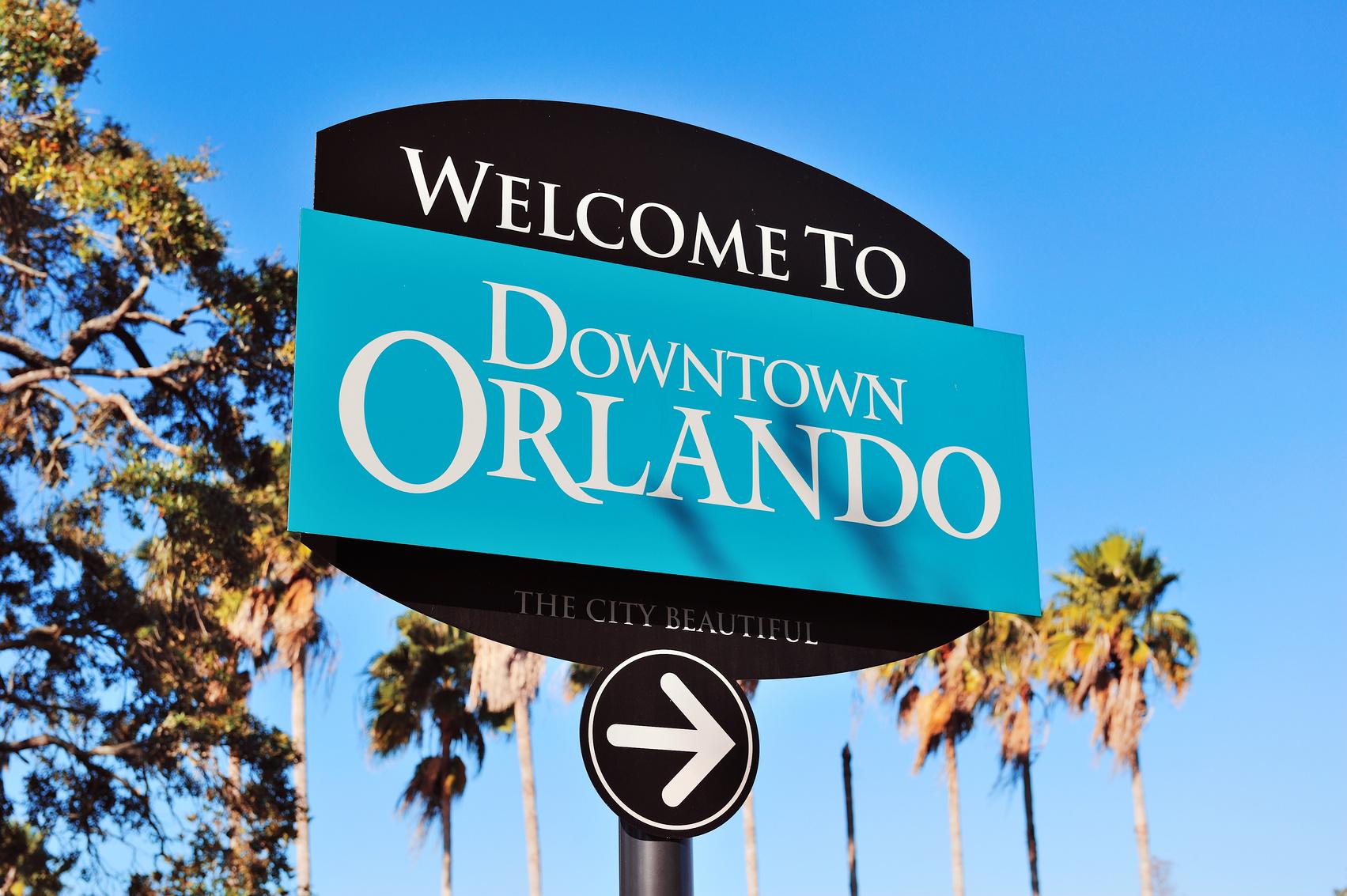
fuel regional leadership, improve competitiveness, and drive new investment into the region, further highlighting the city's dynamic approach to economic development Initiatives like the Orlando Regional Digital Twin demonstrate the city's innovative use of technology to attract business and expand its infrastructure, reinforcing Orlando's position asahubfordiverseeconomicactivitiesbeyond tourism With a growing population and highly educated workforce, the city has become a magnet for industries ranging from healthcare and biotechnology to aerospaceanddefense.
One key driver behind Orlando's economic success is its business-friendly environment
The city offers a range of incentives, including tax breaks and streamlined regulatory processes, to attract companies looking to relocate or expand their operations. This welcoming atmosphere has led to an influx of businesses across various sectors, resulting in a robust economy that continues to thrive despitechallengesfacedbyothercities


THE ECONOMIC IMPACT THE ECONOMIC IMPACT OF THE LUXURY AND OF THE LUXURY AND FASHION INDUSTRY ON FASHION INDUSTRY ON THE U.S. ECONOMY THE U.S. ECONOMY
Expert Opinion: Valeria Margarita Cardona Arcila is an Entrepreneur, Founder, and CEO of MerakiUS. She isalsoanexpertintheLuxuryandFashionIndustries.
The U S fashion and luxury industries are economic giants, integral to the nation's innovation, employment, and global market presence. These sectors not only embody cultural sophistication but also function as vital cogs in the machinery of economic progress This article unfolds their expansive contributions to GDP, pioneering innovations, employment creation, and international trade prominence
The Relevance of Fashion and Luxury to the U.S.Economy
Fashion and luxury are not just about glamour; they are economic powerhouses. They drive innovation in sustainable manufacturing and digital marketing, contributingtotheU.S.'sglobalstanding.
The sectors offer many employment opportunities, from artisanal craftsmanship to high-tech marketing roles, and present a nicheforhigh-skilledtalent.
The fashion and luxury industries are formidable economic engines According to the U.S.BureauofEconomicAnalysis(BEA), the apparel and footwear sector alone has injected over $350 billion into the U.S. GDP, a testament to its vitality Expanding to the broader luxury market, including high-end jewelry, accessories, and beauty products, the financialimprintgrowsexponentially T
A report by the Council of Fashion Designers of America (CFDA) and McKinsey & Company highlighted the fashion industry's dynamic role in economic development, noting that it supports millions of jobs across the United States The sector's employment impact is profound and multifaceted, from designersandartisanstoretailemployeesand digitalmarketingprofessionals
ThereportstatedthattheU S luxurymarket's annual revenue is well above the $100 billion mark, highlighting its pivotal role in economic stimulation.
The broader fashion industry accounts for nearly 2% of the United States GDP, cementing its status as an indispensable economicengine.
Theluxurygoodssectorsupportsdiversejobs, asconfirmedbythelatestBLSstatistics
The Bureau of Labor Statistics (BLS) is an agency of the United States Department of Labor. It is the principal fact-finding agency in labor economics and statistics and is part of the U.S. Federal Statistical System. In 2020, the industry upheld over 4 million jobs, from thecreativeheartbeatofdesigntotheretail and marketing fronts. Artisans in boutique settings play a crucial role in local economies, underscoring the industry's commitment to qualityandcraftsmanship.
Innovation in the fashion and luxury sectors significantly contributes to economic resilience and growth Sustainable manufacturing practices are a prime example, with many luxury brands leading the charge in adopting eco-friendly materials and processes

This aligns with growing consumer demand for sustainability and opens new markets and opportunities for economic expansion Innovation, especially in sustainability, is evidenced by over 60% of CFDA members pursuingeco-friendlypractices.
Digital marketing advancements like ecommerce and VR have become the backboneofretailresilienceandgrowth.
Innovation in the fashion and luxury sectors significantly contributes to economic resilience and growth Sustainable manufacturing practices are a prime example, with many luxury brands leading the charge in adopting eco-friendly materials and processes. This aligns with growing consumer demand for sustainability and opens new markets and opportunities for economic expansion
Digital transformation is another area where the fashion and luxury industries excel. Ecommerce, digital marketing, and virtual reality (VR) experiences reshape the retail landscape, drive sales, and enhance customer engagement Adapting these technologies has proven essential, especially in navigating the challenges of recent global events like the COVID-19pandemic.
The U.S. fashion and luxury sectors hold a competitive position on the international stage. The Commerce Department's Office of Textiles and Apparel (OTEXA) reported 2019 that the U.S. exported over $80 billion in apparel and textiles. Moreover, Statista recognizes the U.S. as the second-largest globalmarketforluxurygoods.Thesefigures emphasize the U.S.'s significant role in the luxury market and its global economic influence
In the ever-evolving luxury market landscape, point-of-purchase (POP) displays stand out as a pivotal strategy for brands aiming to captivate high-end consumers. The relevance of the fashion and luxury sectors to theU S economycannotbeoverstated,with

these industries contributing significantly to economic growth, employment, and international trade This article delves into the sector's importance, examines the impact of recent global events on sector dynamics, and explores the evolution of data needs for informed decision-making, emphasizing opportunities for highly high-skilled professionalsandentrepreneurs
POP displays are more than aesthetic enhancements; they are strategic elements that bolster brand visibility and consumer loyalty. These displays have proven to influence consumer purchasing behavior decisively Through interactive displays and digital showcases, leading luxury brands exemplify the transformative power of POP displays in enhancing customer engagement anddrivingsales.

When executed effectively, POP displays can transformtheconsumerpurchasejourneyinto an immersive experience These displays servemultiplefunctions:
Enhance Brand Visibility: POP displays help luxury brands stand out in a crowded marketplace, fostering brand recognition andrecall.
Improve Customer Engagement: By creating interactive and aesthetically pleasing displays, brands can engage customers more deeply, encouraging them to spend more time exploring the products.
Drive Purchase Decisions: Strategically placed POP displays can influence consumerbehavioratthecriticaldecisionmaking moment, increasing the likelihood ofpurchases.
Industry analysis indicates the fashion and luxury sector's continued growth, driven by digital innovation, evolving consumer preferences towards sustainability, and the global expansion of luxury brands. With the increasing integration of e-commerce and digital marketing strategies, these industries are set to further cement their status as critical contributors to the U S economy and jobmarket
The industry's shift toward sustainability responds to consumer demand for environmentally responsible brands This strategic shift is reflected in the increasing adoption of sustainable practices and materials, further emphasized by innovative POP displays highlighting the brand's commitmenttotheenvironment.
POP displays in the luxury market reflect the sector's innovation, resilience, and economic significance Theyarecrucialinenhancingthe consumer experience and driving economic growth. The luxury market remains fertile for innovation, offering endless possibilities for careeradvancementandbusinesssuccess
The luxury market offers career advancement and business success possibilities for professionals and entrepreneurs, underscoring the importance of staying informed and adaptable in this dynamic sector
Leading luxury brands have leveraged POP displays to remarkable effect For instance, high-end cosmetic brands use interactive displays, allowing customers to try products virtually before purchase. Similarly, luxury fashion retailers incorporate digital screens displaying runway shows or the craftsmanship behind their products, enriching the shopping experience
To better understand the innovative world of POP, graphic design, and visual merchandising, we interviewed Valeria Margarita Cardona Arcila, the founder and CEOofMerakiUS.
Valeria Margarita Cardona Arcila is a renowned graphic design and visual merchandising designer. Her journey is as vivid and impactful as the designs she creates. Valeria is the leader of MerakiUS and has over 15 years of rich experience shaping brand stories and consumer experiences through innovative design strategies.

Valeria's expertise is vast and profound, having collaborated with renowned firms such as MC Hormas Zapatos and Comercializadora Ragged. Her academic background includes a bachelor’s degree in graphic design and specializeddiplomasinmarketingandsales.
Valeriaisavisionaryatheartwhoseleadership goes beyond aesthetics She is involved in strategic product placement and workforce motivation, which drives customer engagement and financial success. Her contributions have been instrumental in propelling brands to the forefront of retail innovation I invite you to gain insights from a professional who designs displays and orchestrates the symphony of visual storytelling that captivates and motivates the luxurymarket.
Q1: Valeria Arcila, what are Point-ofPurchase (POP) displays, and why are they criticalinretail?
POP displays are marketing materials or advertising placed next to the merchandise they promote These are used in retail to attract consumer attention and encourage sales. They're critical because they create a visual allure that can influence consumer behavior and decision-making right at purchase.
Theytransformaroutineshoppingtripintoan engaging experience
By presenting aesthetically appealing and interactive products, POP displays can educate customers, provide a tactile experience, and build a narrative around a product. This enhances the shopping experience and helps forge a stronger connection between the customerandthebrand
Q2:Pleaseexplainhowdesignprinciplesare appliedtocreateeffectivePOPdisplays.
Absolutely Effective POP displays rely on design principles like contrast, balance, and emphasis to catch the eye We use color theory to evoke emotions, typography to ensurereadabilityandconveypersonality,and imagery to create a sense of lifestyle or aspiration The goal is to design a display that stands out while remaining authentic to the brand'svoice

“POPdisplaysaremarketingmaterialsor advertisingplacednexttothemerchandise theypromote”,explainedValeriaMargarita CardonaArcila,arenownedgraphicdesign andvisualmerchandisingdesigner.
Q3: What trends are currently shaping the futureofPOPdisplays?
In the fast-paced world of luxury retail, POP (Point-of-Purchase) displays are evolving with the latest trends to captivate consumers and enhance the in-store experience Currently, several innovative trends are shaping the future of POP displays in the luxurysector:
Digital Transformation: Luxury brands increasingly leverage digital tools to enhance in-store experiences With significant luxury salesexpectedtocomeonlineby2025,brands are integrating digital aspects like personalized gift packaging and VIP event access. They also engage customers directly throughsocialmediaplatforms,enhancingthe traditional POP display with a digital interactionlayer
Live-Streaming and Events: Live-streaming hastakenoffinmarketslikeChinaandisbeing adopted by luxury brands worldwide This trend involves hosting live events that offer customers exclusive insights into fashion shows or interactive sessions with beauty experts This approach translates into a dynamic POP display beyond the physical product to include live, interactive brand experiences
Clienteling and Direct Selling: Luxury retail embraces mobile solutions to improve customer service and make sales staff more autonomous UtilizingmobilePOSdevices,the team can manage inventory, process returns, and access customer information, including purchasehistoryandpreferences,rightonthe shop floor. This creates a more personalized POP experience informed by customer data andpreferences
Virtual Reality and the Metaverse: Virtual reality and the Metaverse are becoming a playground for luxury brands, with many creating virtual products or experiences that tie into their physical offerings This includes designing virtual outfits for games or selling digital art as NFTs Brands are also starting to accept cryptocurrencies, pushing the boundaries of how and where luxury products aredisplayedandpurchased.
Second-Hand and CSR: The growing second-hand luxury market is pushing brands to consider the lifecycle of their products and how they are presented in the resale market. Brands also focus on CSR initiatives, ensuring that their POP displays and overall brand image align with sustainabilityandethicalresponsibilityvalues


"Store-Within-A-Store" Concepts: Retailers createspecializedzoneswithinlargerstoresto provide customers with a curated, branded experience TheseSWASsetupsofteninclude product samples, demos, or tutorials, making them an integral part of the customer journey andanenhancedPOPdisplaythatemphasizes thevalue-addedexperience.
Omnichannel Merchandising: Blending online and in-store experiences to create seamless shopping journeys is becoming crucial Brands are redefining omnichannel experiences by ensuring that their visual merchandising efforts, both in-store and online, work cohesively to increase sales and customersatisfaction
These trends indicate a shift towards more integrated, experience-driven, and technologically sophisticated POP displays that go beyond mere product showcasing. They aim to create immersive brand experiences that engage the luxury consumer at multiple touchpoints, both physicalanddigital.
Q5: How do POP displays affect a brand’s overallmarketingstrategy?
According to recent studies, the luxury marketisexpectedtogrowby2%to4%in 2024, with regional and national variations, according to an analysis by McKinsey Luxury retail is expected to reach at least 305 billion euros this year due to strong demand in Europe and the United States, while local consumption remains important inChina.
In addition, according to Statista, the most critical sectors for the luxury industry in 2024willbe:
The United States has a projected revenueof$126billion.
China with a projected revenue of $123 billion
Japan with a projected revenue of $22 billion
Luxury resale will boom in 2024 as more brands take control of their second-hand markets The 1% will continue to buy luxury goods, but other classes may pull back
According to Bain & Company, the personal luxury market is expected to growby3%-8%overthenextyear.
POP plays an essential role in marketing strategy because it is the physical manifestation of a brand's message when purchasedecisionsaremade.Itmustwork with other marketing efforts to reinforce the same message and contribute to a cohesivebrandnarrative.
Q6:Inyourexperience,whathasbeenthe mostinnovativeuseofPOPdisplays?
The integration of technology is the most innovative. For example, displays that interact with customers’ smartphones or use screens to simulate product use These high-tech solutions can turn a display into an immersive experience, making a lasting impressionontheconsumer.
Q7:Howdoyoumeasuretheeffectiveness ofaPOPdisplay?
Measuring effectiveness involves several metrics, but sales uplift is the most direct indicator. However, if there's a digital component, we also look at customer engagement levels, dwell time at the display, and social media interaction It’s about understanding the display's role in the broader consumer journey to engage withthebrand


THE IMPORTANCE OF THE IMPORTANCE OF EXCELLENCE IN CUSTOMER EXCELLENCE IN CUSTOMER
SERVICE SERVICE
ExpertOpinion:LuizFrancaFilhoisanEntrepreneur,servesasBusinessDeveloperDirector,andisan expertinHospitality,Food,andServices.
In today's competitive landscape, where consumers are increasingly demanding and well-informed, excellence in customer service isnotjustanoptionbutavitalnecessityforthe successofanybusiness Customerexperience has become a strategic differentiator for companies, and the pursuit of customer satisfaction transcends mere commercial transactions, embracing the building of solid and lasting relationships In this context, it is imperative to understand and prioritize not only the needs of the customer but also those of the employee who deals directly with them. Investing in employee quality of life, providing adequate training, establishing organized procedures, and emphasizing the importance of personal image and behavior are essential toensureanexceptionalcustomerexperience andbusinesssuccess.
The Foundation for Sustainable Excellence Employee quality of life is fundamental to customer service excellence Satisfied and motivated employees are likelier to dedicate themselves to their work and provide quality customer service When a company invests in its employees' quality of life through benefits, wellness programs, or a positive work environment, it cultivates an environment conducivetoexcellenceincustomerservice.
Employees who feel valued, respected, and supported by the company are more likely to engage in proactive customer service, seeking effectivesolutionsanddemonstratinggenuine empathy Moreover, quality of work life is intrinsically linked to productivity and talent retention. Happy employees tend to stay with the company longer, reducing the costs associated with employee turnover and contributing to the development of more profound and meaningful relationships with customers.
Empowerment for Excellence Investment in training is essential to customer service excellence Well-trained employees have the skills and knowledge to handle various customer situations and demands effectively and professionally. Training not only equips employeestoperformtheirtaskscompetently but also enables them to understand the importance of customer service and cultivate essential interpersonal skills, such as effective communication, empathy, and problemsolving
Furthermore, ongoing training allows employees to stay updated on industry best practices and trends, ensuring they can provide high-quality service and adapt to customer needs and expectations A comprehensive training program can also contribute to employees' professional and personal development, increasing their motivationandengagementatwork
Foundations for Efficiency and Consistency Agenda and procedure organization plays a crucial role in ensuring a consistent and highquality customer experience A wellstructured environment and clearly defined processes allow employees to meet customer needsefficientlyandseamlessly Thisincludes proper time management, process standardization, and implementing support systemsthatfacilitateworkflow
A well-organized agenda allows employees to dedicate adequate time and attention to each customer, ensuring personalized service focused on individual needs. Additionally, well-established procedures minimize errors andinconsistencies,promotingcustomertrust andstrengtheningthecompany'sreputation
Employee image and personal behavior are essential components of the customer experience and significantly impact brand perception and service quality Customers assess the competence and efficiency of the service provided and the overall impression they receive from the employees they interact with.
Employees who present a professional image and maintain courteous, attentive, and helpful behavior convey a positive message about the company and reinforce customer confidence andloyalty.Ontheotherhand,asloppyimage or inappropriate behavior can harm the company's reputation and negatively affect thecustomerexperience
Excellence in customer service is an achievable goal when a company prioritizes the well-being and empowerment of its employees, establishes efficient processes, and promotes a customer-centric organizational culture Investing in employee quality of life, providing adequate training, organizing agendas and procedures, and emphasizing the importance of personal image and behavior are fundamental steps to creating an exceptional customer experience and ensuring long-term business success By recognizing the value of employees as brand ambassadors and facilitators of customer satisfaction, companies can build solid and lasting relationships that drive growth and competitivenessinthemarket.

Luiz Franca Filho is an entrepreneur and hospitality, food, and services expert. He serves as DirectorofBusinessDevelopmentatHAYMAN-WOODWARD’sHeadquartersinDubai,UAE. Luiz Franca Filho's career trajectory exemplifies the art of embracing change and diversity Originating from Rio de Janeiro, Brazil, with a foundation in Gastronomy, his journey from esteemed hotels like Copacabana Palace to a strategic role in Nestlé Brazil marks his versatility Fluent in Portuguese and English, Luiz's story is an inspiring testament to the transformative powerofresilienceandskilldiversityinthedynamicservicesindustry.

BALANCING ACT: THE BALANCING ACT: THE CONVERGENCE OF CONVERGENCE OF CULTURE, TECH, AND LAW CULTURE, TECH, AND LAW IN THE IP LANDSCAPE IN THE IP LANDSCAPE
ExpertOpinion:MarioCamargoisanEntrepreneur,Lawyer,IntellectualProperty,andAudiovisualArts Professor.
Navigating through the realm of intellectual property (IP) and copyright law involves adaptingtofundamentalindustryshiftsthat are reshaping how professionals approach their work. This article examines emerging trends, providing insights into the changing landscapeofIPlaw.
The theme's complexity required a versatile andexperiencedexpertinthefield,orperhaps allthesefields.
Mario Camargo is a lawyer in Colombia who specializes in international negotiation and is a professor of audiovisual arts. Camargo’s career is multifaceted, spanning from management to intellectual property consultancy, audiovisual production, music session work, and data management consulting
His expertise cuts across both private sectors, with a strong emphasis on preserving cultural identity, safeguarding intellectual property rights, and managing digital data effectively Notably, he has played a pivotal role in significant projects such as developing an interactivewebsiteforVenezuelanrefugeesat therequestoftheUnitedNations,atestament to his ability to blend his diverse skills into impactfulventures.
As a lawyer in Colombia and a specialist in international negotiation, Mario Camargo is a well-regarded Cultural Manager with skills in the design, realization, production, and evaluation of public and private cultural projects, government organizations, and rural and urban communities He uses theoretical and practical tools to conserve the cultural identity of determined groups, linking them to territorial cooperation networks on a local and national scale and geopolitical regions at an internationallevel.
CamargoisalsoarecognizedIntellectual
Property Consultant with leading skills in identifying and protecting intangible assets, such as registering and negotiating trademarks, copyrights, artistic works, and logicalsupport(software)
AsanAudiovisualProducer,Camargo’stalents encompass production design, audiovisual investigation, and preproduction, including the structure and fulfillment of recording plans, legalization of legal transfers of image rights, locations, and people, logistical hiring for fieldwork, and ensuring the well-being of theproductionteam,supplyofequipmentand recordings, postproduction, including editing, assembly, musicalization, sound, and production books, and distribution and marketingofaudiovisualworks.
Mario is also a proficient recording producer who writes lyrics and music for commissioned songs, develops musical works derived from an original song, fixes musical works on phonograms, edits, merges, and masters digital audio files, and sets up reproduction and sale of digital audio files on internet platforms, produces soundtracks, dramatic accents, foleys, and wildtracks for audiovisual works, advertising music production, and production of sound distinction of products or services.
His unique talents include being a competent session musician with guitarist, bassist, and studio arranger skills and instrumental executioninliveperformances.
The domain of IP and copyright law is experiencingatransformationinfluencedby technological progress, global integration, the impact of AI sustainability considerations, and the evolving dynamics of work in the gig economy. These developments necessitate that IP experts stay adaptable by enhancing their expertise and strategiestomaneuverthroughtheintricate
legal framework Embracing these shifts will be vital in safeguarding assets in a progressively digitalized and interconnected world. The ongoing evolution of IP law presents challenges and opportunities, underscoring the significance of innovation and collaboration in preserving creations that driveadvancementandculturalenrichment
Thedigitalerahassignificantlybroadenedthe scope of IP law by introducing challenges related to copyright protection, managing digital rights, and disseminating online content.
The evolution of media, social networking sites,andonlinemarketplaceshasprompteda reassessment of traditional intellectual property frameworks to address the ease of digital duplication and distribution Advances in technology present new avenues for securing intellectual property rights and monitoring ownership of digital assets, creating a transparent and unchangeable record of transactions involving intellectual property This shift highlights the importance of intellectual property experts adapting to progress to ensure the proper protection and administrationofdigitalresources.
The digital age has transformed generating, sharing, and consuming content Intellectual Property (IP) regulations encounter obstacles as digital platforms dominate content dissemination.Cutting-edgetechnologieslike Digital Rights Management (DRM) systems andblockchaintechplayrolesinsafeguarding digital assets by offering robust defenses against unauthorized replication and sharing These innovations protect copyrights and guarantee that creators receive fair compensation for their creations. With the proliferation of content, IP professionals must keep pace with technological advancements toshieldintellectualpropertieseffectively
Rights (TRIPS) and the Madrid Protocol is essentialforprotectingglobalIPrights
Property (IP) lawyers navigate various international frameworks to safeguard their clients’ intellectual assets in different regions. This growing trend underscores the significanceofcollaborationandthenecessity forexpertswell-versedininternationalIPlaw
Securing IP assets across borders is increasingly important in today’s interconnected society International collaboration is crucial, with agreements such as the Berne Convention and the Agreement on Trade-Related Aspects of Intellectual Property Rights (TRIPS) playing roles. However, disparities in IP regulations present challenges for consistent enforcement. IP professionals must navigate these intricacies, advocating for alignment to safeguard clients’ interests worldwide The shift towards global integration calls for an approach to IP law that emphasizes comprehension of international rulesandagreements.
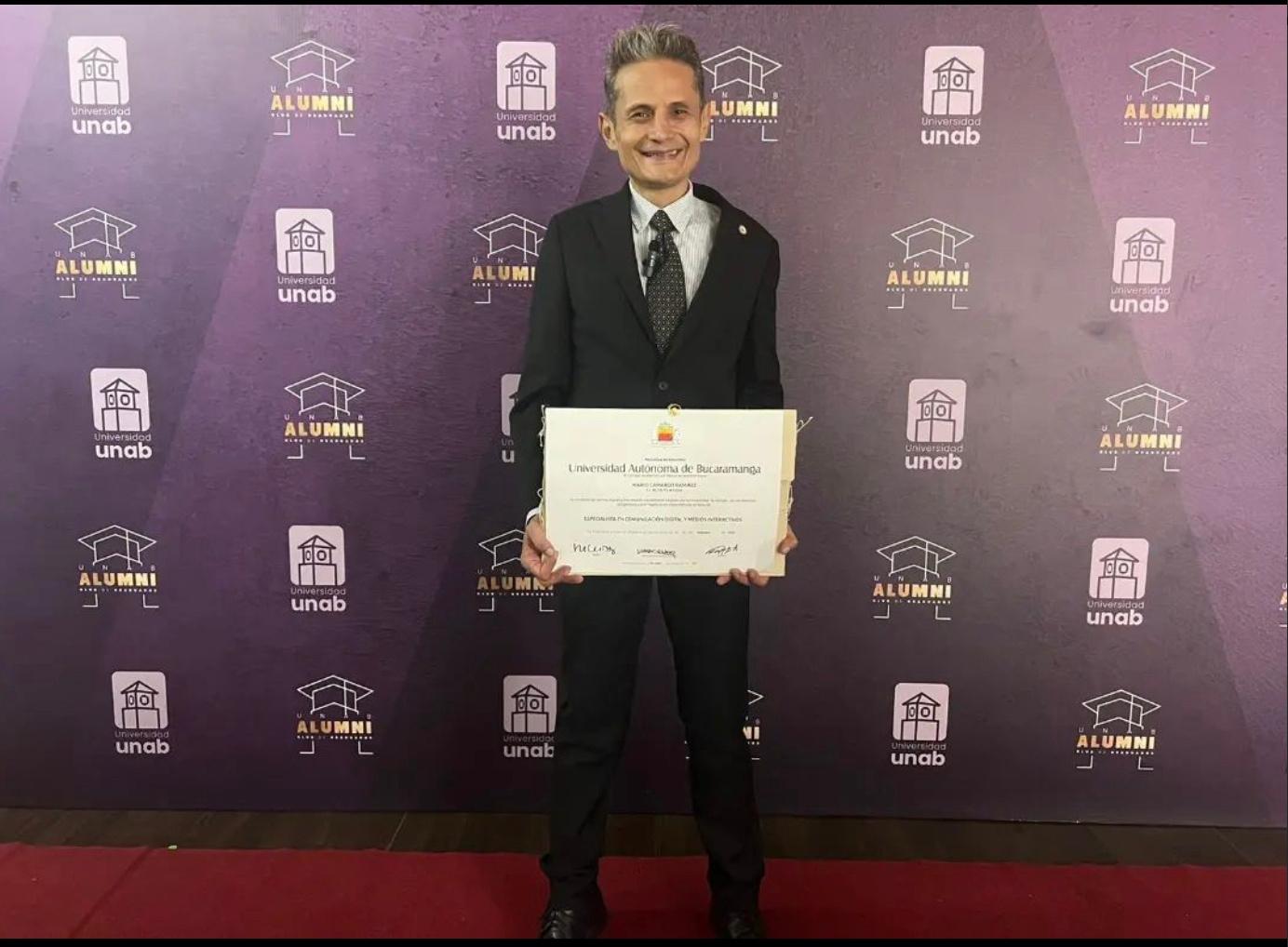
Globalization fostered interconnectedness worldwide, fostering collaboration while introducing challenges to protecting intellectual property rights across borders Standardizing IP laws and adhering to agreementssuchastheAgreementonTradeRelatedAspectsofIntellectualProperty
Ourexpertprofessional,MarioCamargo, combineslegal,cultural,andtechnological knowledge,makinghimexceptionally versatile.“Passionatelyengagedintherock genreasacomposer,vocalist,guitarist, bassist,coupledwithexpertiseinlaw, broadcasting,andaudiovisualproduction."
Artificialintelligence(AI)challengescopyright law, particularly concerning authorship and ownership of AI-generated content. The emergence of AI-driven creations raises questions about applying copyright protections to works without a creator Legal experts are grappling with these concerns, deliberating on how current laws can address AI-generated positions and whether new legislation is necessary This development underscores the need for legal strategies to tackle the complexities of AI and machine learningtechnologies
The impact of Artificial Intelligence (AI) on copyright principles, particularly in terms of authorship and creativity, is a topic of increasing importance. As AI-generated content becomes more widespread, there are discussions surrounding the ownership of works produced without human involvement. The continuous advancement of AI technologies necessitates reexamining copyright regulations to accommodate these forms of creation This situation presents challenges and opportunities for property (IP) law, urging experts to interpret and adapt copyright frameworks to align with the progressinAI.
In today’s world, sustainability plays a role across various sectors, influencing how IP law supports environmental responsibility and innovation. IP protections are essential for fostering the growth of technologies and practices ranging from renewable energy solutions to eco-friendly materials Additionally, an increasing focus is on safeguarding knowledge and biodiversity through IP rights to ensure indigenous communities benefit from utilizing their cultural and natural assets. This trend underscores the intersection between IP law, environmentalconservationefforts,andsocial justice
Sustainabilityimpactsindustries,includingthe realmofIPlaw.TheroleofIPlawindrivingeco advancements in sectors such as fashion, technology, and pharmaceuticals cannot be understated Safeguarding intellectual property associated with technologies encouragesinvestmentsinresearchand
development efforts that propel progress in thiscrucialdomain
There is a growing interest in using property (IP) rights to safeguard traditional knowledge and biodiversity, showcasing IP law's role in supporting sustainable development goals This trend emphasizes the importance of incorporating considerations into IP strategies
The gig economy, known for its freelance and contractual work arrangements, presents hurdles to IP law With individuals participating in creative and technological gigs, questions arise about who owns the intellectual property generated by these flexible work setups IP laws must evolve to protect workers' rights while adapting to the decentralized nature of gig work This shift calls for reevaluating IP frameworks to ensure creators maintain control over their contributions even in non-traditional employmentcontexts.
The gig economy, marked by freelance and contract work, poses challenges concerning IP rights. Creative and tech professionals often navigate a landscape where conventional employment protections may only sometimes apply. IP laws play a role in safeguarding gig workers’ creations and innovations
Addressing the economy's requirements within IP law involves balancing flexibility and protection to ensure that freelancers and contractors retain ownership over their intellectualendeavors

Intellectual property is crucial to fostering innovation and creativity, as it provides creators and inventors the right to benefit from their inventions, thus encouraging the creationanddevelopmentofnewideas These rights are regulated nationally and internationally,andlawsvarybycountry
However, the increased creation and invention of artificial intelligence, robots, bots, and machines pose significant challenges and gaps in current intellectual property legislation. This is a growing debate and topic of concern in the legal and technologicalfield.

Herearesomeofthekeyissues:
1 Authorship and Ownership: Intellectual property laws traditionally recognize human beingsasauthorsorinventors.However,when an AI is the "creator," the question arises of who should be considered the rights holder Should it be the developer of the AI, the user whousedtheAItocreateit,ortheAIitself?
2. Level of Creativity or Inventiveness: Intellectual property laws often require a certain level of creativity or inventiveness that is "original" or non-obvious Determining this level in works or inventions created by AI can becomplex,asitcanbedifficulttodiscernthe extent to which the work results from human programmingortheautonomous"decision"of theAI
3 Liability and Control: If an AI infringes existingintellectualrights,thequestionarises
es of who is responsible This also presents questions about human control over AIs and the extent to which developers and users can foreseeordirectAIactions.
4. Evolution and Adaptation of AIs: As AIs become more advanced and capable of learning and adapting, the line between human programming and AI autonomy becomes more blurred, further complicating issuesofownershipandresponsibility.
5 International Differences in Legislation: Intellectual property legislation varies significantly from country to country, which can create situations where an AI may be violatinglawsinonecountrybutnotanother.
In response to these challenges, some countries and organizations are beginning to explore and propose legislation changes to addressAI'sroleincreationandinvention
Despite this, it is an evolving field, and there are still many unresolved questions. Adapting intellectual property laws to incorporate AI's contributions properly is a complex issue that will likely require a thoughtful approach and new ways of thinking about intellectual propertyinthedigitalage
Our expert professional, Mario Camargo, combines legal, cultural, and technological knowledge,makinghimexceptionallyversatile inhisfield

Q1. Mario how do you manage your work's cultural and technological aspects at the same time, in today's globalized and technologicallyadvancedworld?
Balancingtheintricaciesofmyworkwithinthe artistic and technological realms presents challenges and inspiration I approach my strategies with deep respect for cultural heritagewhilerecognizingitsinherentvalue and the need for protection. Concurrently, I embrace progress that expands our understanding of what can be safeguarded underIPlaws.
This harmonious fusion allows me to devise legal solutions that are culturally aware and technologicallyproficient
Q2. What are the primary hurdles in safeguardingassetstoday?
In today’s world, safeguarding intangible assets is crucial to nurturing creativity and innovation While digital platforms have made contentcreationmoreaccessible,thereisalso anincreasedriskofuseandcopying Aspartof my job, I focus on adjusting protections to preserve original works in this ever-changing digitallandscapeeffectively.
One of the primary hurdles in safeguarding assets today is the speed and ease at which digital content can be shared and reproduced Anyone can download, copy, and distribute creativeworkswithafewclickswithoutproper attribution or compensation to the original creator This makes it challenging to monitor and control the use of intellectual property, leading to unauthorized usage and potential revenuelossforcreators
Another hurdle is protecting against piracy and counterfeiting. Technological advancements have made it easier for counterfeiters to replicate and sell fake versions of products, such as luxury goods or software This impacts legitimate businesses' profits and harms consumers who may unknowingly purchase inferior or harmful products
Additionally, there are difficulties in identifying ownership and provenances of creative works. With the rise of social media and online platforms, it can be challenging to track down the original creator and prove ownershipofapieceofcontent Thiscreatesa gray area where individuals may claim ownershiporusecopyrightedmaterialwithout permission
Various laws and regulations are in place to combat these challenges to protect intellectual property rights These include copyright,patent,trademark,andtradesecret laws. However, enforcing these laws can be difficult, especially when dealing with crossborderinfringements
Q3. How has your background in arts influencedyourlegalcareer?
My experience in the arts has significantly shapedmylegalwork Ithasallowedmetosee copyright from a perspective that appreciates the legal aspects and the essence of protecting creation This unique viewpoint helps me advocate for the law while championing expression, ensuring that legal frameworksadapttosafeguardinnovationand artistry
Q4. What guidance would you offer aspiring intellectualpropertyattorneys?
I recommend fostering a mindset and a commitment to continuous learning for those looking to specialize in intellectual property law Due to advancements, intellectual property laws are constantly evolving Embrace the changes, dive into the world of technology, and be ready to devise strategies to safeguard the ever-changing landscape of artisticandintellectualcreations
5. Do you have any insights on what lies in intellectualpropertylaw?
The future of intellectual property law is intricately linked with progress. For those in the field of IP law, it's crucial to understand both digital and legal domains The key challenge and opportunity lies in predicting howtechnologywillimpactcreationprocesses and how IP laws must evolve to remain guardiansofinnovationandimaginationinthis newdigitalera

